Department News
"Education is the passport to the future,
for tomorrow belongs to those who prepare for it today."
— Malcolm X
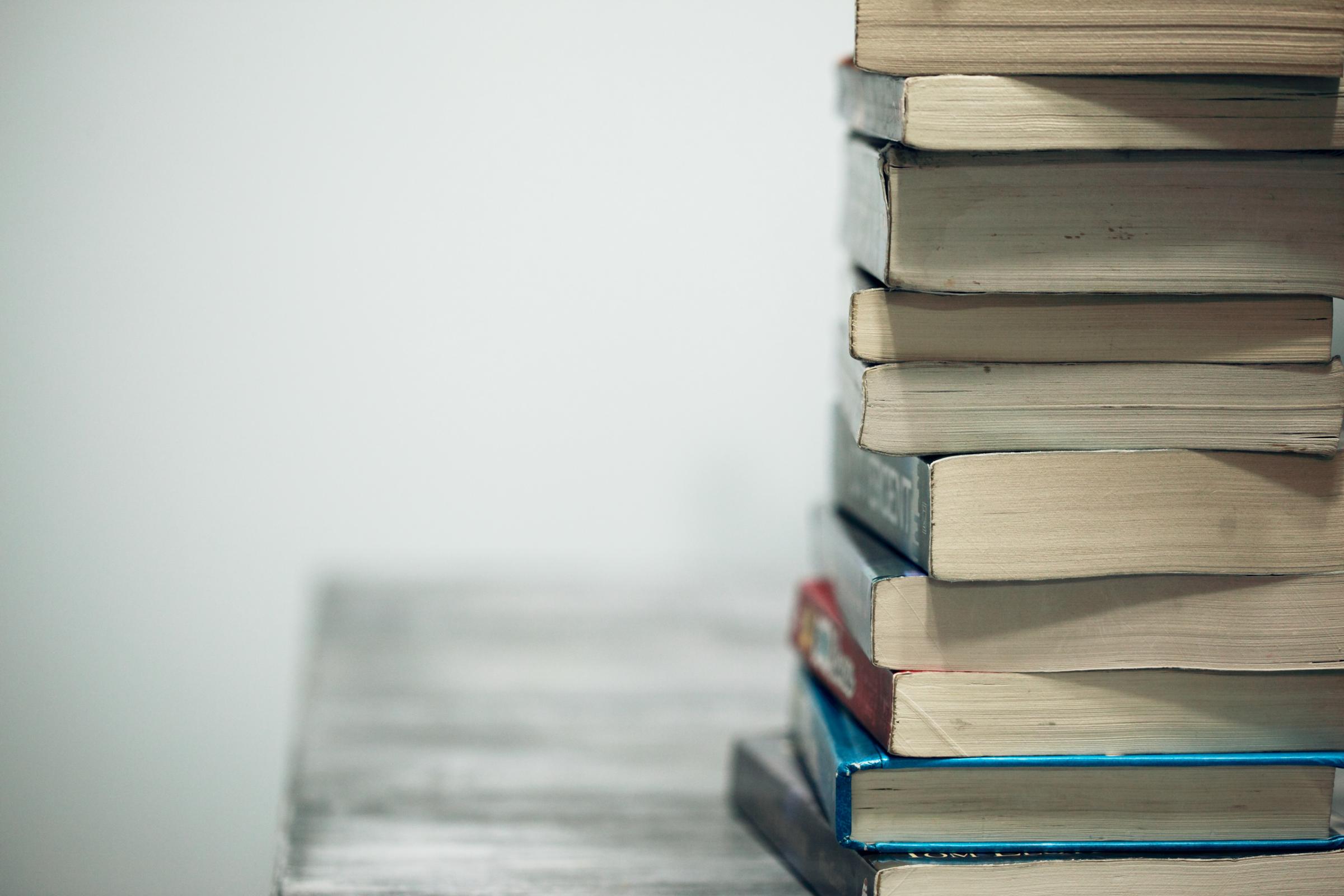
Department News
"Education is the passport to the future,
for tomorrow belongs to those who prepare for it today."
— Malcolm X
As Semester 1 comes to a close, the Mathematics Faculty is excited to share some of the key achievements, initiatives, and events that have marked a successful and enriching term for both students and staff.
Innovative Teaching Approaches:
Our dedicated faculty members have continued to implement innovative teaching methods to enhance student learning. This semester, we introduced interactive online modules and integrated technology into the classroom, allowing for more engaging and dynamic lessons. These efforts have significantly improved student participation and understanding of complex mathematical concepts.
Year 9 Accelerated Class: Bivariate Data & Excel Exercise
Students were asked to complete a Google form to collect the data about their heights, shoe size, hours’ sleep and screen time so that they could analyse the correlation between:
Height vs Shoe size and Screen time vs Sleep.
Jordana & Amelia explored the relationship between the amount of screen time and sleep.
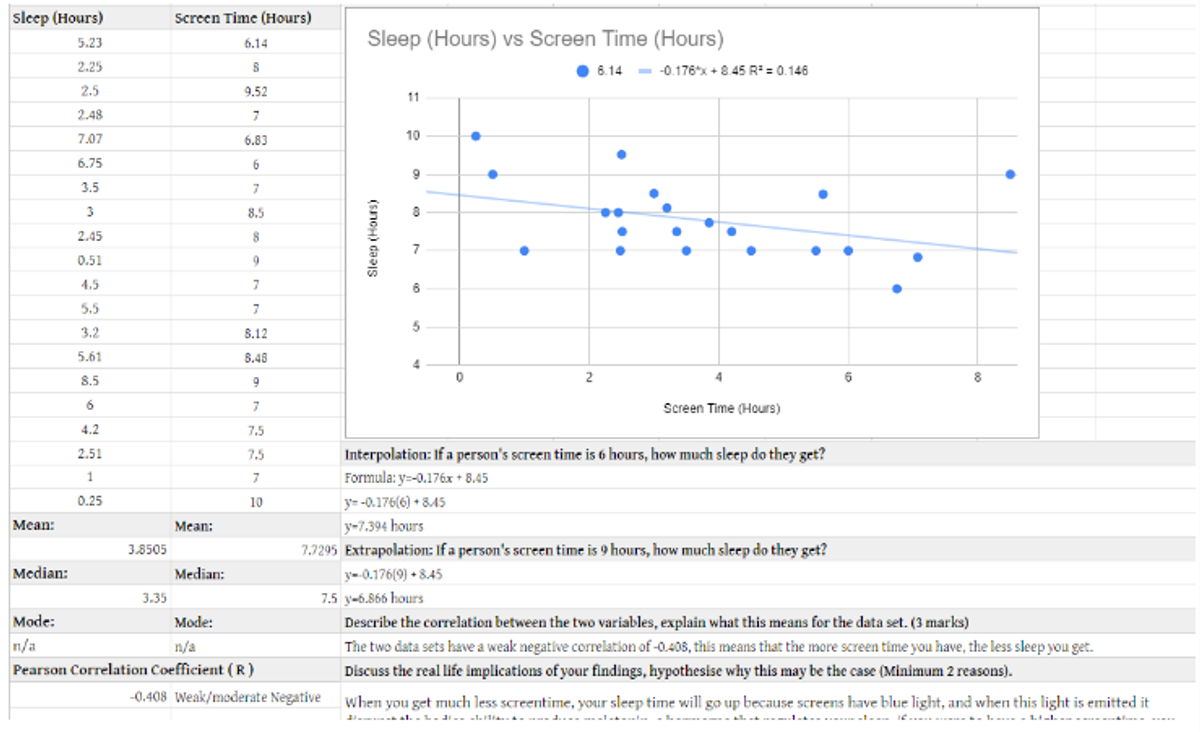

“During my Maths lesson, we learnt about Bivariate data which describes the relationship between two different variables and the correlation between them, whether it was positive or negative, strong, moderate or weak relationships. During this lesson, we learnt about linear regression which involves fitting in a straight line that best describes the data on a scatter plot. This line can then be used to find an equation that can be used for interpolation and extrapolation. In this activity, we had been given data about our classmates, for example the amount of sleep, screentime, height, shoe size and steps in a day each student had. In pairs or groups of three, we then picked two variables that we believed had a correlation. Using this data, we created a scatter plot which included a trendline and the equation relevant on google sheets. I had chosen the amount of sleep and screen time and discovered that it had a moderate, negative correlation which demonstrated that the more screen time someone had, the less sleep they received. Creating the scatter plot with my partner went well, as well as interpolating and extrapolating the data using the equation. However, during this activity, I found it quite challenging to implement the different formulas to each cell, to calculate the mean, mode, median and correlation.”
Written by Jordana Agus
Olivia and Chloe’s explored the relationship between the Height and the Shoe size.
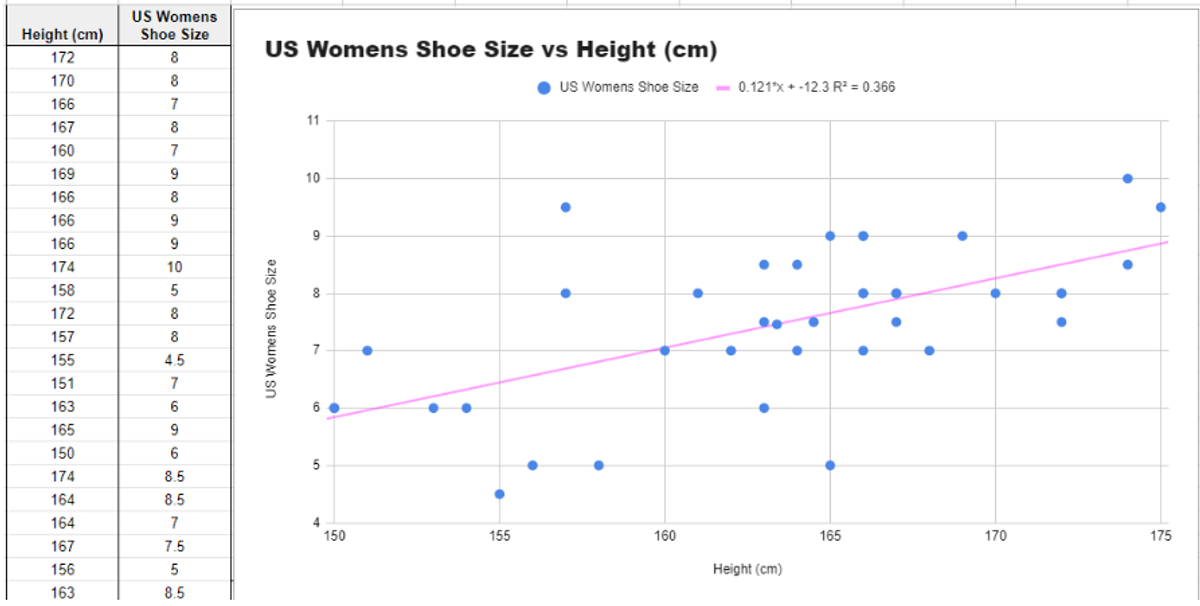

This activity allowed students to use mathematical skills to analyse real life situations. Students learned skills of excel which fostered a deeper understanding of Bivariate Data and can translate to many jobs after school. It also gave students the opportunity to understand the importance of sleep and how screen time can negatively affect the amount of sleep.
Ms Jasmine D’Arcy
Year 9 Accelerated “Triangle Party”
Year 9 Accelerated celebrating their excellent results for Task 2 and the beginning of Trigonometry by having a “Triangle Party” where students brought triangle shaped snacks to celebrate!
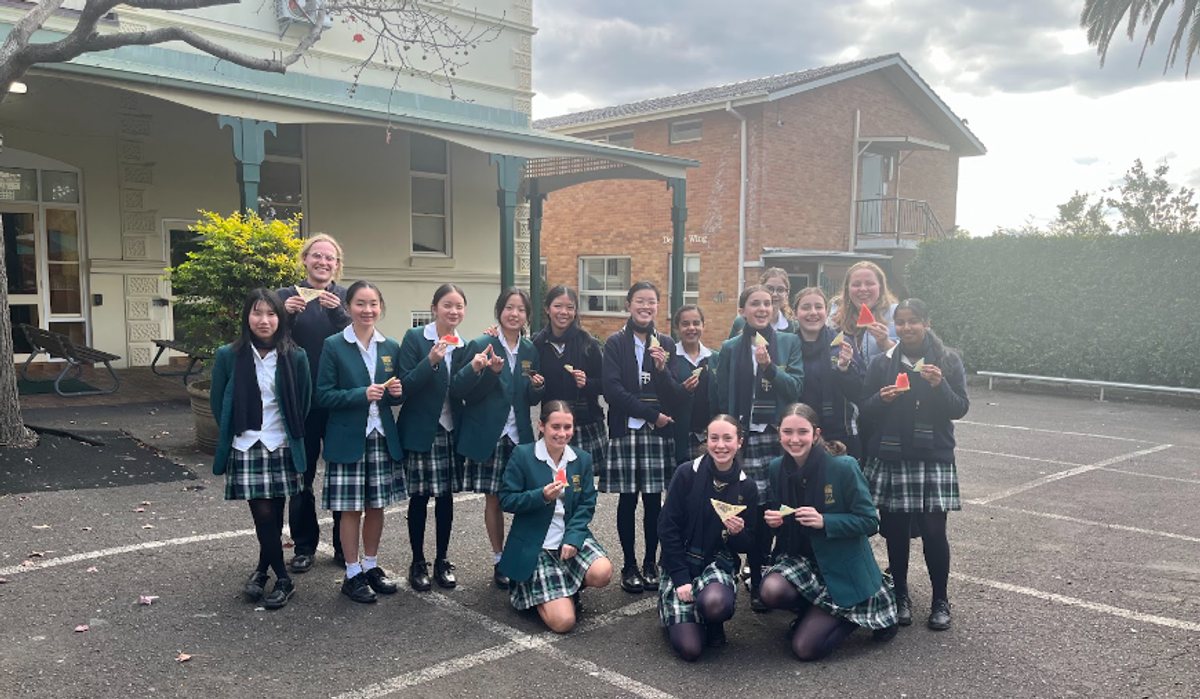

Year 8 Investigating Pythagoras’ Theorem
Year 8 is investigating Pythagoras’ Theorem through a hands-on activity - see Eddie Woo’s video for more!
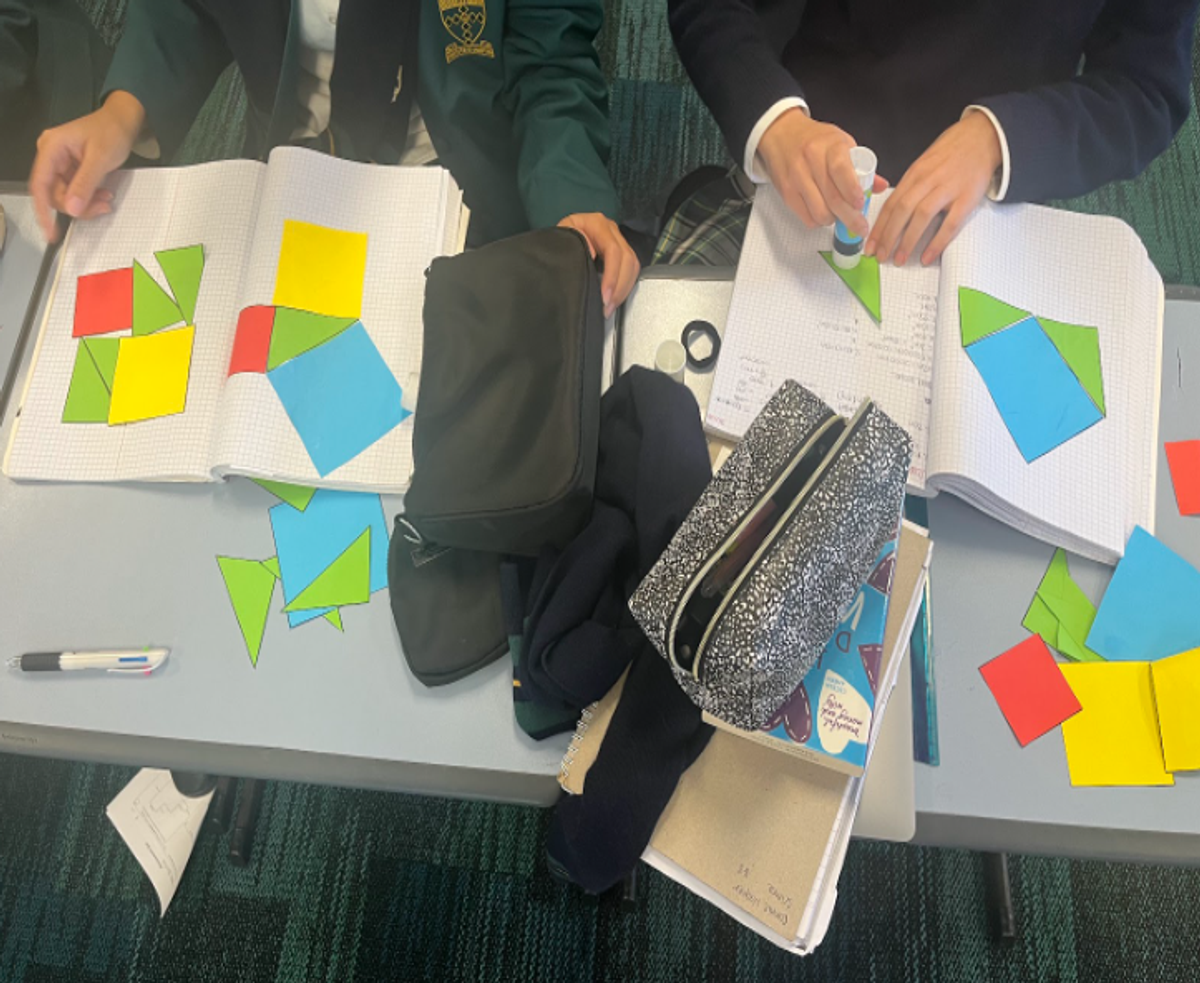

Year 7 Students Showcase Creativity in "Favourite Number" Posters
As part of Task 1 this semester, our Year 7 students embarked on an exciting mathematical journey by creating posters on their favourite numbers. This project not only reinforced their understanding of numerical concepts but also allowed them to showcase their creativity and research skills.
Students were asked to select a number of their choice and investigate its various numerical properties. Some of the key questions they explored included:
The Favourite Number Posters were a testament to the students' solid understanding of number concepts combined with their creativity. Here are some highlights:

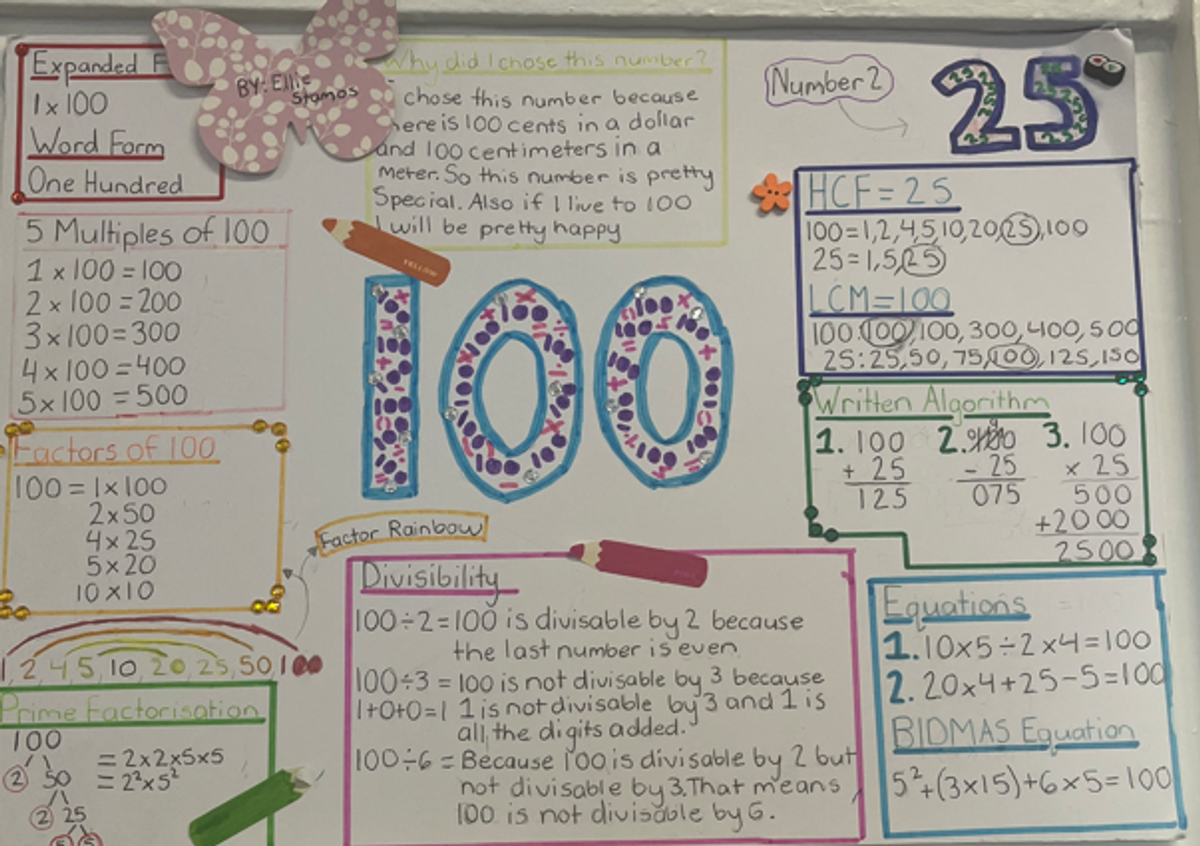


Faculty Professional Development: Enhancing Teaching Excellence
In our continuous effort to provide the highest quality education, the Mathematics Faculty participated in several professional development workshops this semester. These sessions were designed to keep our educators abreast of the latest trends and research in mathematics education, ensuring that our teaching methods remain effective and innovative. Here are some highlights:
Curriculum Reform Professional Learning Mathematics 7 – 10
This workshop was a key focus for our faculty, offering a comprehensive look into the recent changes and updates to the Stage 5 curriculum. The workshop was divided into two insightful parts:
The first part of the workshop delved deeply into the new curriculum pathways for Stage 5, providing our teachers with a clear understanding of the updated content and learning outcomes. Faculty members explored various pathways available to students and unpacked the new assessment descriptors. This segment ensured that our teachers are well-prepared to guide students through these changes, aligning their teaching strategies with the latest curriculum standards.
The second part of the workshop focused on Rosenshine’s Principles of Instruction, particularly on the effective use of questioning and the stages of practice. These principles are grounded in research and offer a structured approach to teaching that promotes student understanding and retention. The discussion highlighted:
Outcomes and Impact:
The professional development workshops have equipped our faculty with advanced tools and methodologies to enhance their teaching practices. By understanding the new curriculum pathways and integrating Rosenshine’s principles, our teachers are better prepared to foster a more effective and supportive learning environment for our students.
Sydney Catholic Schools Visit: Showcasing Excellence in Mathematics Education
On Monday, the 17th of June, we had the privilege of welcoming delegates from Sydney Catholic Schools to our College. The visit was focused on an in-depth interview with Mr. Spyro Kyritsis about the effective integration of Rosenshine’s Principles of Instruction in our mathematics classrooms. The interview delved into how our teachers have embraced Rosenshine’s Principles, with particular emphasis on implementing daily and fortnightly reviews. These review sessions are integral to our teaching strategy, as they ensure that students regularly revisit and reinforce their knowledge, thereby maximising retention and understanding. Our students shone brightly during the visit, showcasing the consistent hard work and dedication that defines our approach to education. Their proactive engagement and enthusiasm are a testament to the positive learning environment fostered by our faculty. The footage and insights gained from the day will be used by Sydney Catholic Schools to create learning modules for teachers across the Archdiocese of Sydney. These modules aim to help educators implement Rosenshine’s Principles effectively in their own classrooms, thereby enhancing teaching practices and student outcomes across the region.
We are proud of our students and teachers for their exemplary performance and are grateful for the opportunity to share our successes with a broader educational community. This visit underscores our commitment to educational excellence and our proactive approach to adopting and implementing research-based instructional strategies.
Upcoming Events
Mathematics Workshop for Year 12 Students:
Two renowned experts will conduct a workshop to help students with their HSC preparations.
Thank you
We extend our heartfelt thanks to all the staff, students and parents for their support and dedication throughout the semester. Your hard work and enthusiasm continue to drive our success.
As we prepare for the next semester, we are committed to building on these achievements and providing even more opportunities for our students to excel in mathematics. Stay tuned for more exciting updates and events!
Maya Mabey (Head of Mathematics)
Steven Quach (Assistant Head of Mathematics)
To the Brigidine Community,
As we conclude another enriching semester in the HSIE department we take a moment to reflect on the remarkable achievements and growth across our broad range of classes. Students moved beyond their success and early progress in term 1 to build towards a strong finish in term 2, covering a vast array of topics ranging from Place and liveability in Geography, Pop culture in International studies, the effects of propaganda in History and the structure of our legal system in Commerce.
One of our highlights this term has come from year 10 who recently undertook an educational tour of Canberra, covering a range of areas in HSIE and Science. Students engaged in a variety of activities designed to build understanding of Australia’s history, culture, heritage and democracy. Students were able to enhance their understanding of Law in Society, Australia in the Modern world and Place and Liveability units of study from their studies, to better grasp how Australia has been shaped as a nation. The College thanks the Parliament and Civics Education Rebate program for their assistance in contributing towards the cost of this study tour through their $30 subsidy payment for each student in attendance, to offset some of the costs.
As we look forward to the short break, we wish all of our year 10’s the best in their subject selection process, we look forward to the year 9 Commerce market day early next term, and we begin to finalise plans for our first European study tour (in a number of years!) to take place in April 2025. Lastly, the HSIE team and our year 12 classes eagerly await the crunch time of HSC Trial exams, on behalf of the team we wish all of our senior students the very best for their final school based assessments.
David Martin
Head of HSIE
“Design is thinking made visual”
-Saul Bass-
Year 7 Wind Spinner Design Projects
This Semester, our year 7 Technology students have explored the topic of Engineered Systems or the topic of Materials Technology. In Engineered Systems, students learn about the impacts of wind power and how natural elements, such as the wind, can be used to generate energy. Students used different materials, tools and techniques, including the laser cutter, Adobe Illustrator and woodworking scroll saws to produce a wind spinner design. In Materials Technology students explored the work of famous designer Peter Alexander and used sewing machines to create their own pyjama shorts and accessories. Our students will switch their topics next Semester so that everyone in year 7 has the opportunity to explore both areas of design.
Below are some examples of designs created using scroll saws in our woodworking room from 7 Technology 4.
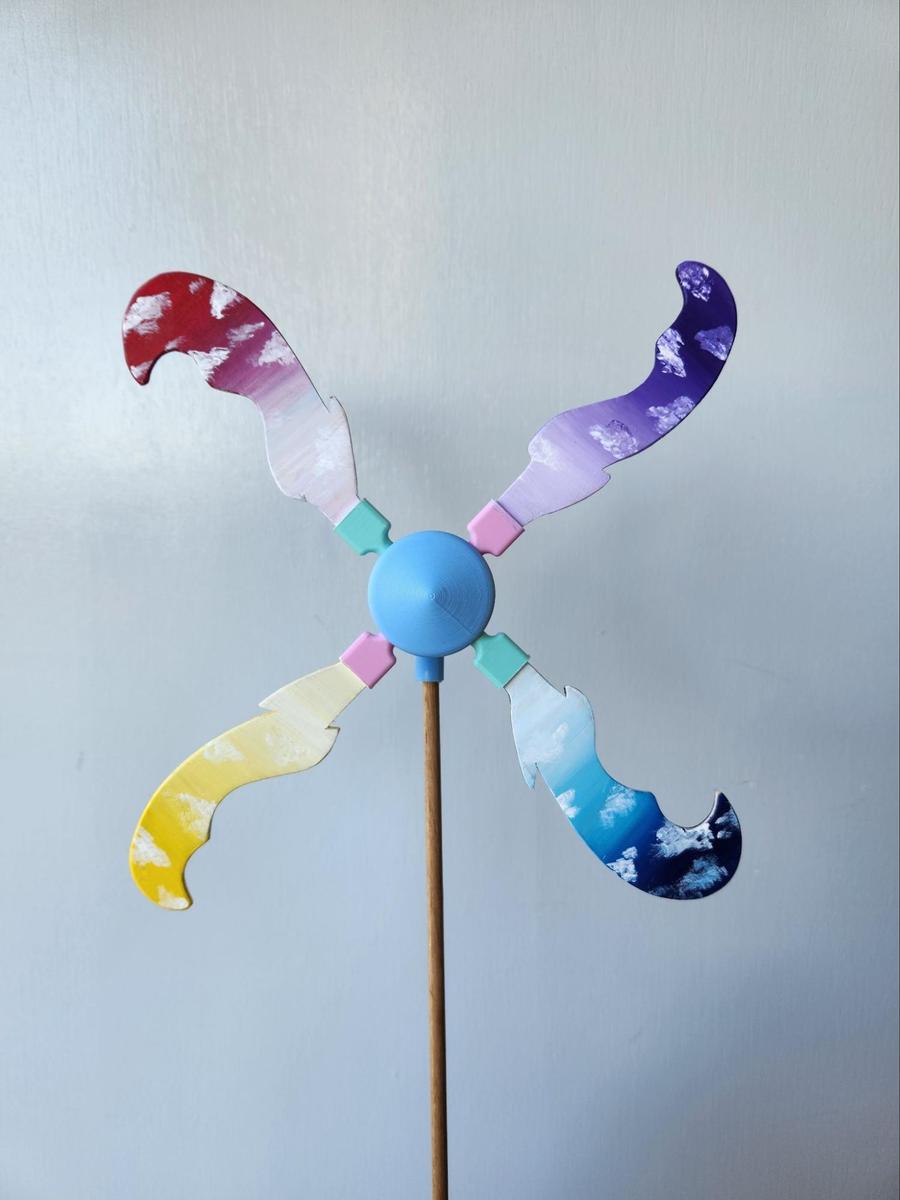
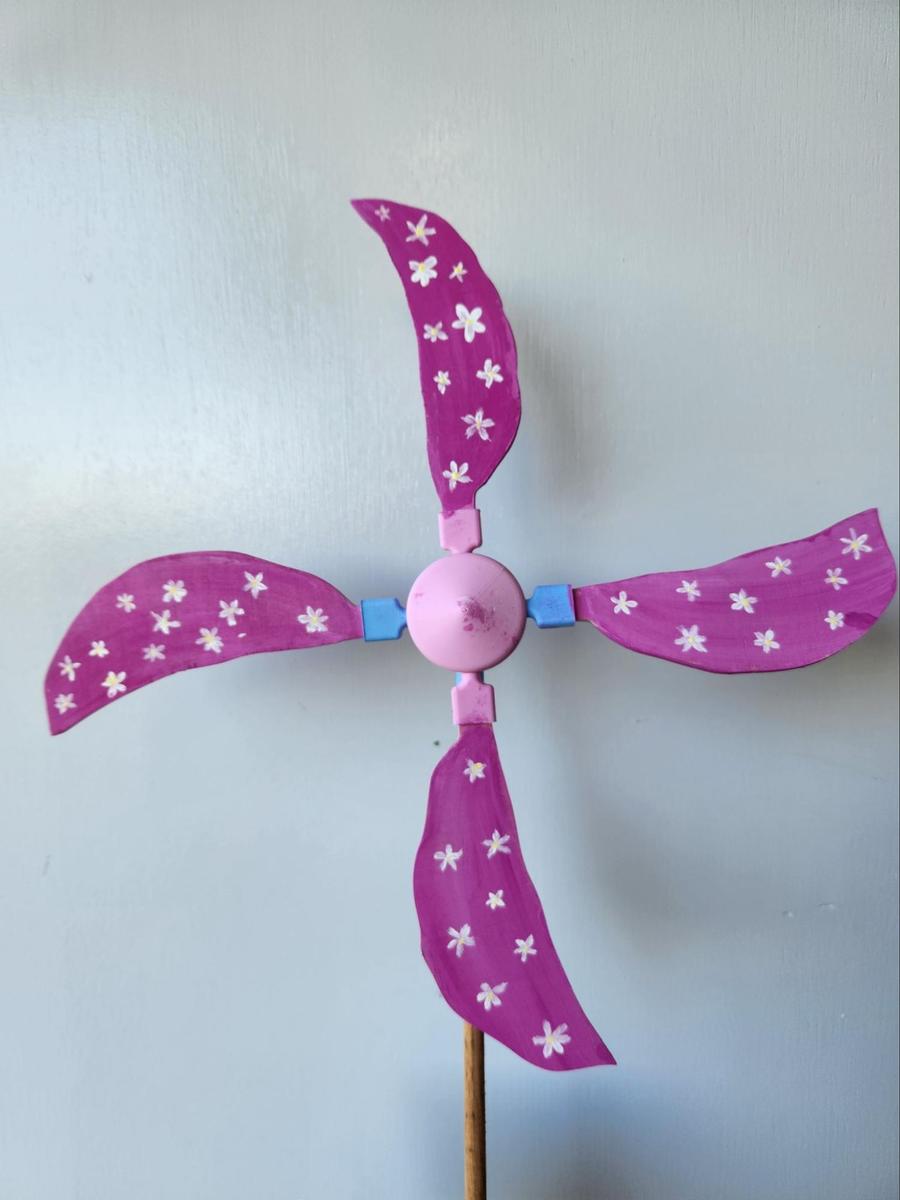
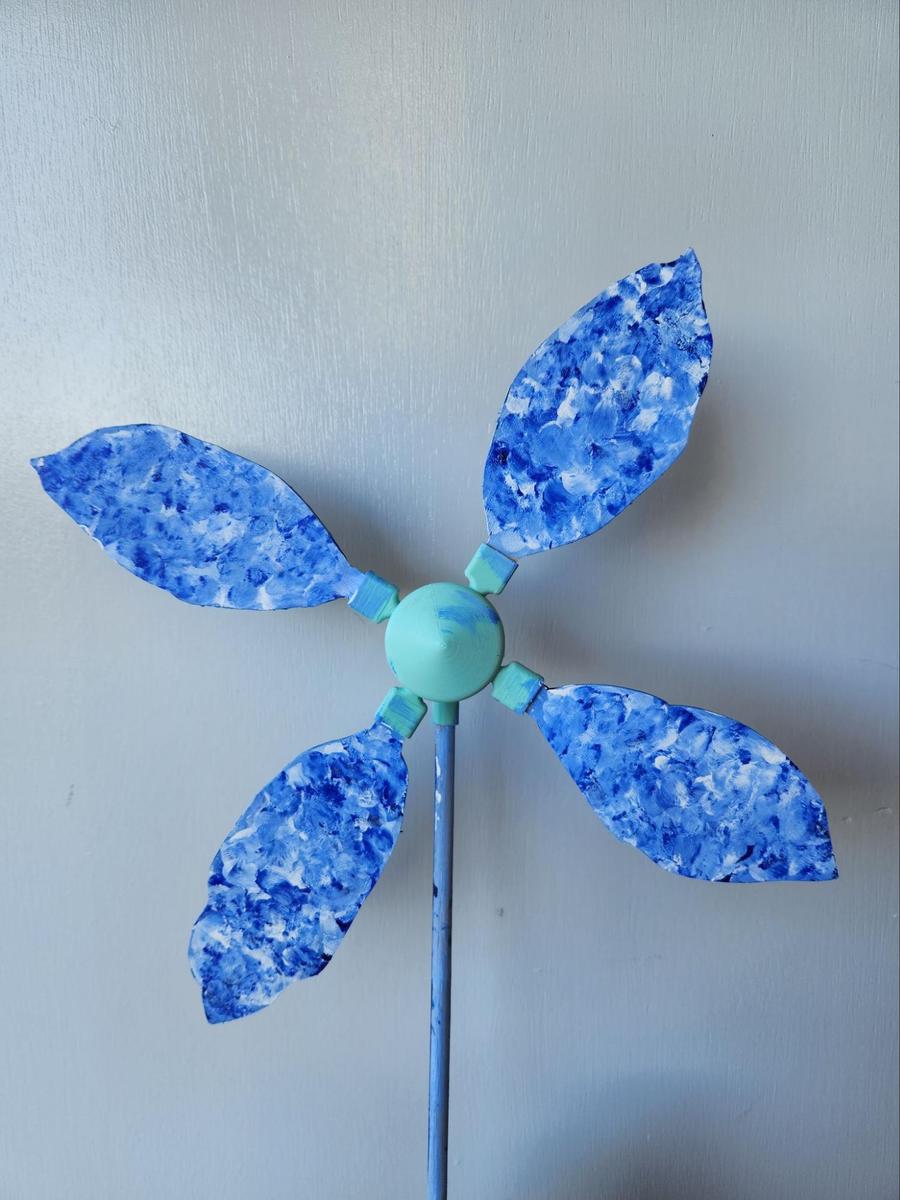
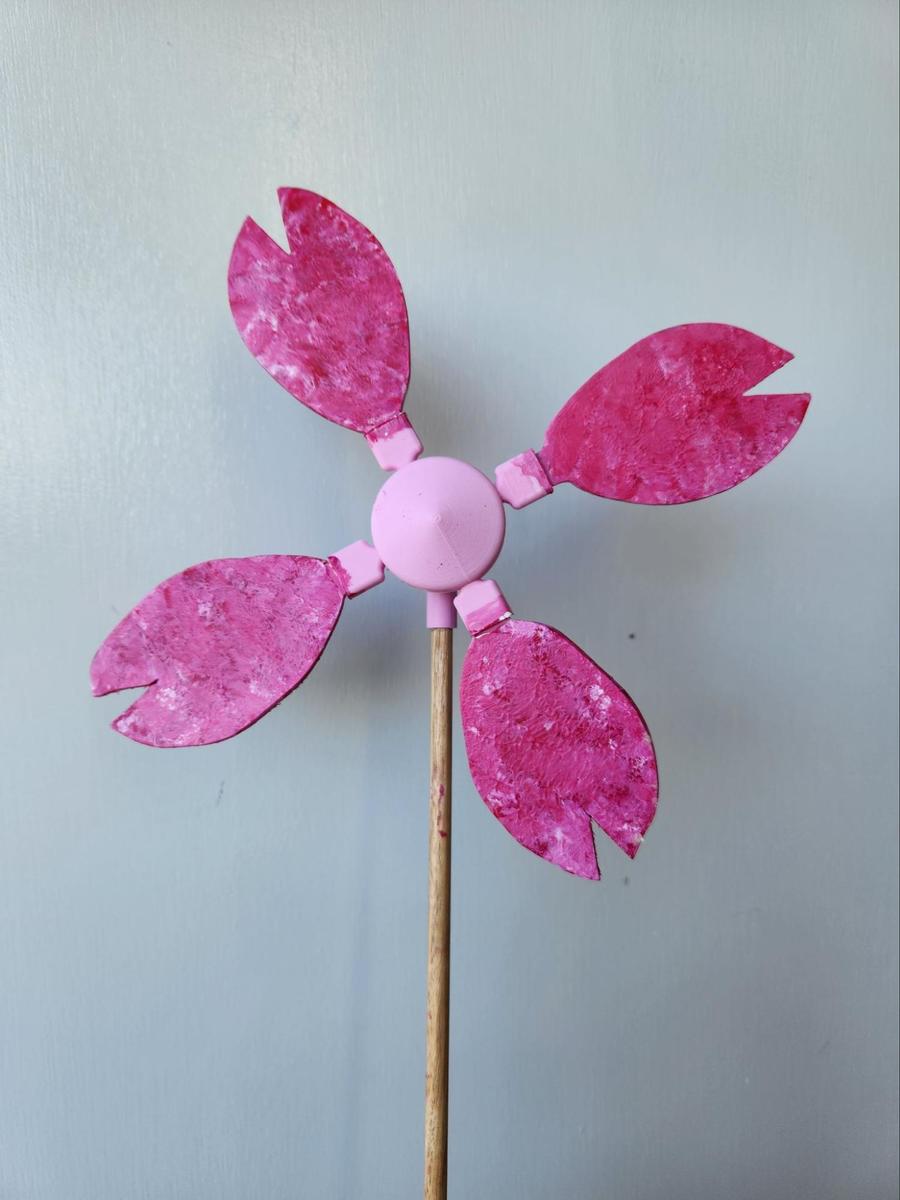
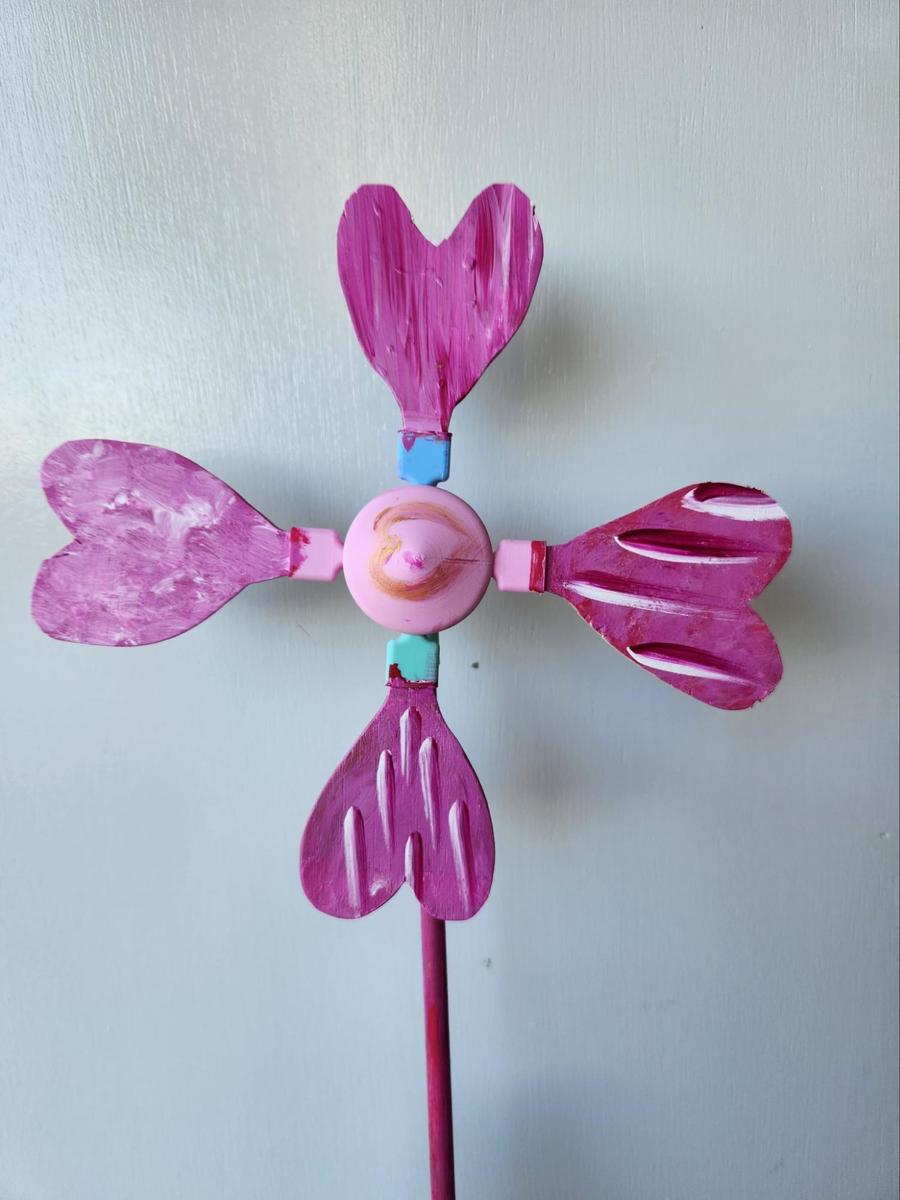
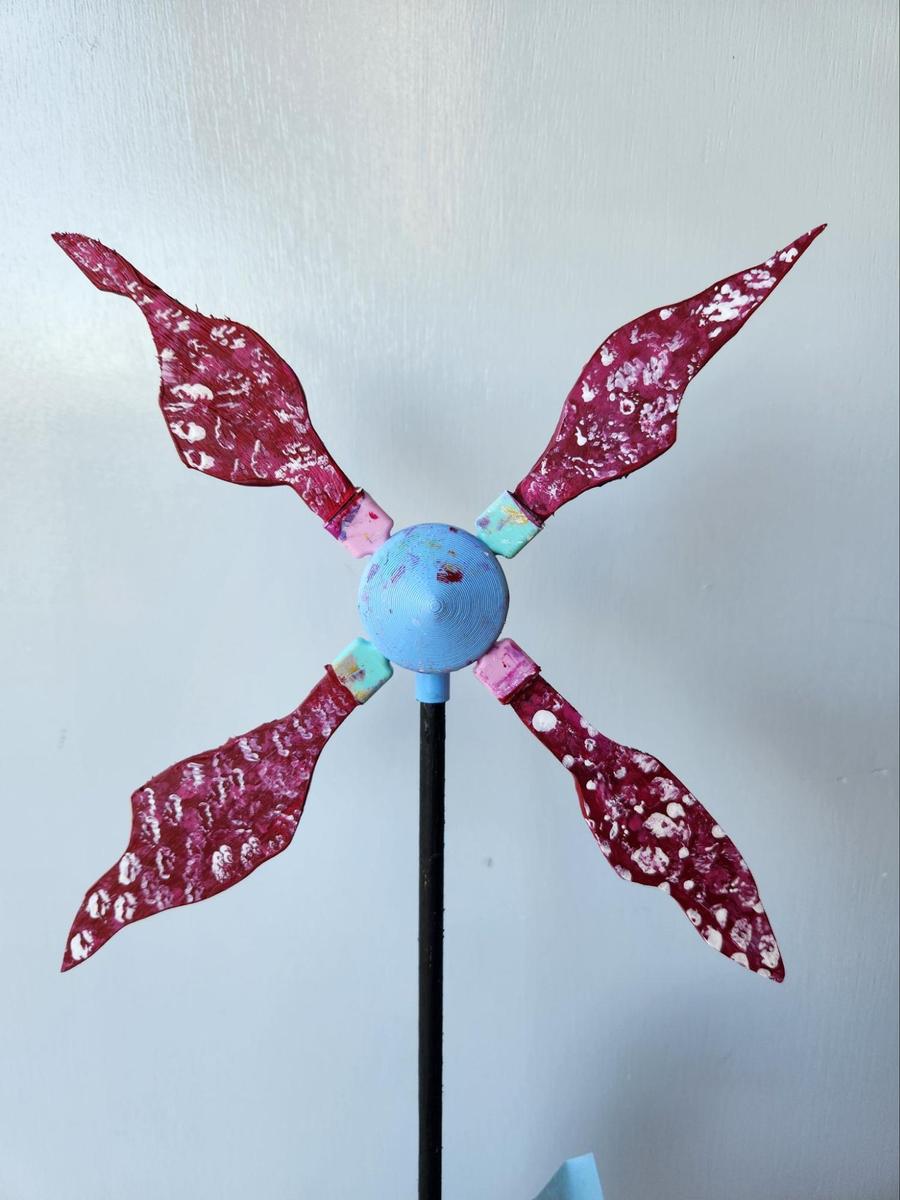
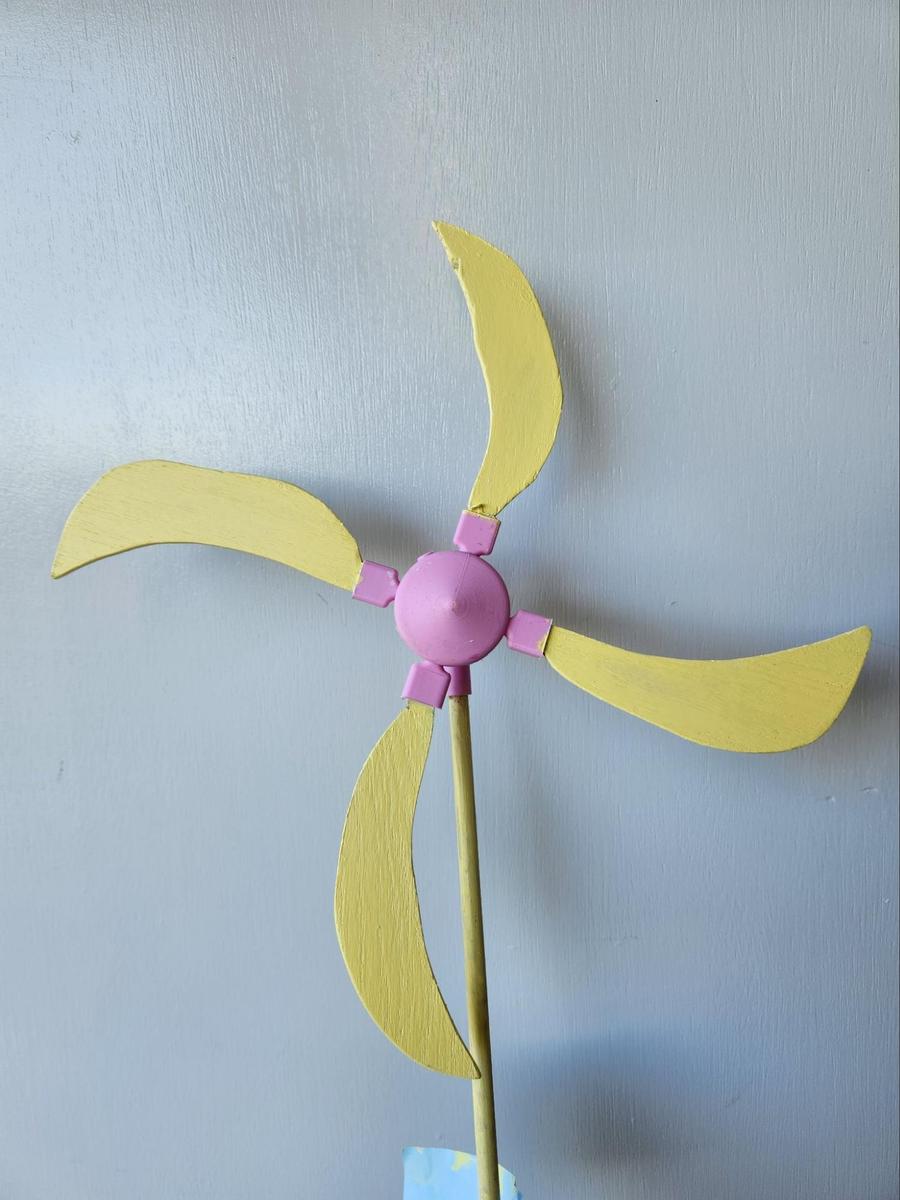
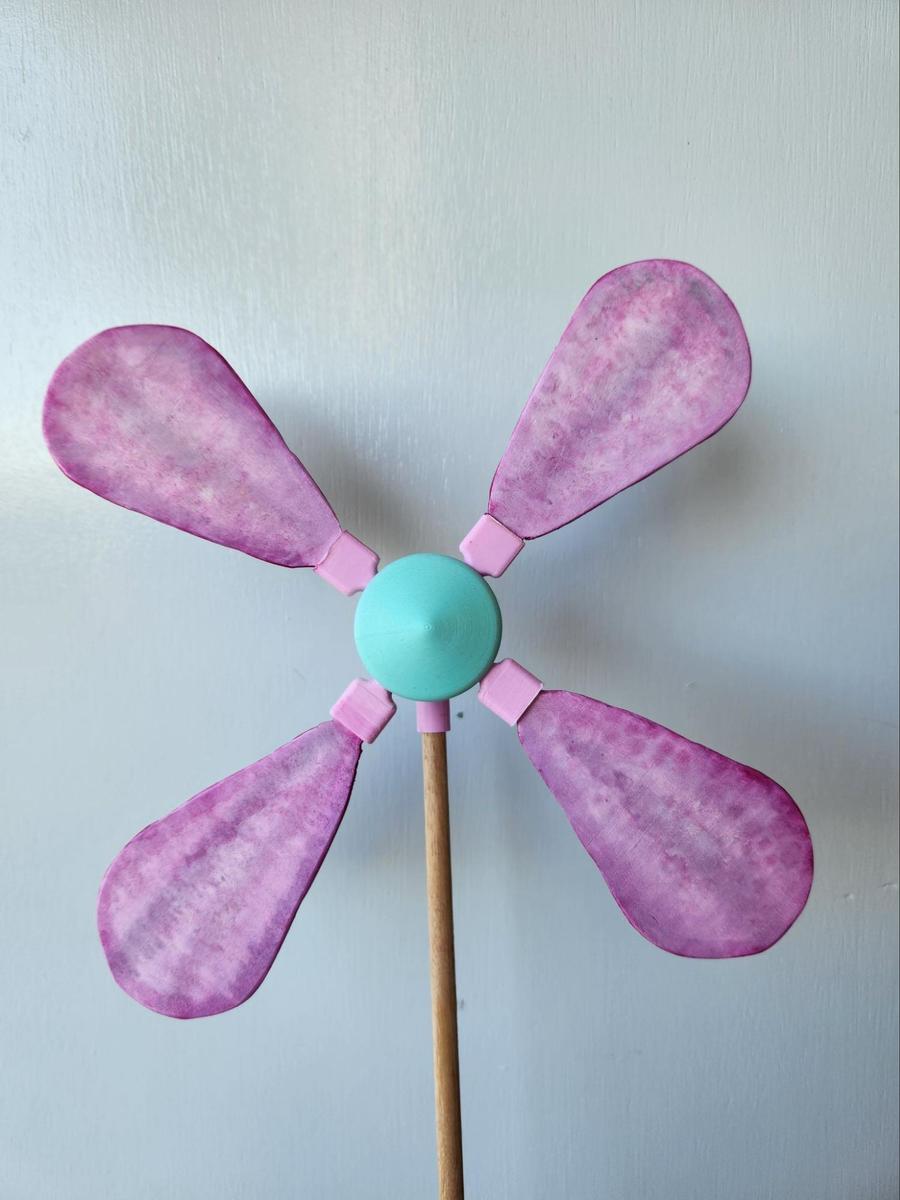








Below are some reflections from our 7 Technology 2 class who, under the experienced guidance of Ms Murray and Mr Gant, produced some beautiful wind spinner designs on the laser cutter.
For my winspinner I first had to choose what design I wanted so I brainstormed a few ideas, once I had my ideas I narrowed it down to three: Japan, Food and Animals. I decided to try and combine them and that led me to the ideas of: Sushi, Lanterns, Temple and Koi Fish. I decided to try these designs on a piece of paper and came up with the solution of doing the Koi fish. I then built a mood board with different ideas of Koi fish. Once I've done this, I sketched out a final design of my wind spinner and it got approved. I sketched my big Koi fish that went onto all of my wind spinners. It was then printed onto the wood and I coloured it with textas and then blended it with water. You might be wondering why I used textas. I did it because I thought it would look better and I am glad I did. The water in the background looks much more blended and better than if I were to use paint.
Audrey Saliba (7TEC2)
For Technology we made wind spinner blades with a laser cutter. We started getting our designs ready early Term 1 and prepared the blades in Term 2. The smaller base components that helped us put the overall design of the wind spinner together were made by a 3D printer. For my design I used paints and also Posca pens to decorate the wind spinner blades. We had the option to be really creative and use Adobe Illustrator to make the laser cutter engraving for our blades and I created a spongebob theme for my design. It was really fun and interesting to create, especially making a mood board to help plan our designs. I think the mood board was my favourite part of this process because I enjoy creating mood boards. In the future, we all need to be mindful of our time management when completing our projects, but overall this project was very fun
Elena Chouseas (7TEC2)
Throughout the process of designing, producing, and testing my wind spinner, I've encountered challenges and made decisions aimed at creating a functional and aesthetically pleasing product. From brainstorming various designs to considering constraints like environmental factors and available resources, each step pushed me to think critically and creatively. While there were hiccups along the way, such as potential issues with spinning in low wind conditions or the complexity of blade designs, I'm satisfied with the final outcome. The spinner effectively blends with its surroundings. Reflecting on this journey, I'm proud of the choices I've made and the commitment I've shown in bringing my vision to life.
Emma Lombard (7TEC2)
In this semester, our class (07TEC2) successfully created wind spinners with our teachers, Ms Murray and Mr Gant. We decided to make them because we can learn about the importance of wind power, a renewable source of energy to provide electricity to local communities without pollution. For this task, we first need to complete a portfolio and settle down on a theme for the design of the blades, and I chose the four Hogwarts houses in the Harry Potter franchise. Then, we drew a sketch of our design, colour our outlines darker using black sharpie and used a blade template provided on Adobe Illustrator to create the engravings of the blades while simultaneously putting different parts of the wind spinner together. After the laser cutter finished our engravings, we started to paint the engraved blades with our desired colours, and I chose red for Gryffindor, blue for Ravenclaw, yellow for Hufflepuff and green for Slytherin. After the painted blades dried up, We places the blades into the completed part of the wind spinner we created before and our wind spinner was completed. Before finishing the task, we need to perform an experiment to test if our wind spinners actually functioned well, and fortunately, mine was a successful wind spinner.
Kaylee Tse (7TEC2)
For my wind spinner, first I brainstormed some designs to eventually print onto my blade. Some designs I brainstormed were the bow design, leaf design or watermelon design. I painted different sketches to visualise what it would look like on my finished wind spinner design. After this, I chose the parts of my windspinner including the wooden pole and the pink attachments I had to add so my blades could become attached to my wind spinner. Next I picked a design off google and uploaded it to adobe creator. After adjusting the photo so it would be able to be printed through the laser cutter, I put an image of my bow design onto a frame of the blade size using Adobe creator. After this I printed out my blades with the bow design on it and coloured the bows in with texta. This process took about 15 weeks in total.
Eva Delavande Vasconcelos (7TEC2)
From the start of the journey of our wind spinner projects we were ecstatic. In our class we first researched about why we needed wind spinners in the future. We then had to research how they should function, look and what materials were needed to build them and if the materials were sustainable or not. Afterwards, we had to draw, paint and colour the design many times, to perfect the design. We had to upload this design to Adobe Illustrator in order for it to be laser cut. We could edit the design on Adobe to make it exactly how we wanted it. To make the base, we stuck 3D printed parts together with a wooden stick. Finally the blades were ready to be coloured and stuck on the wind spinner. And whilst it took two terms to complete and finalise, in the end our designs look on point.
Athalia Gracelynn and Gemma Pham (7TEC2)
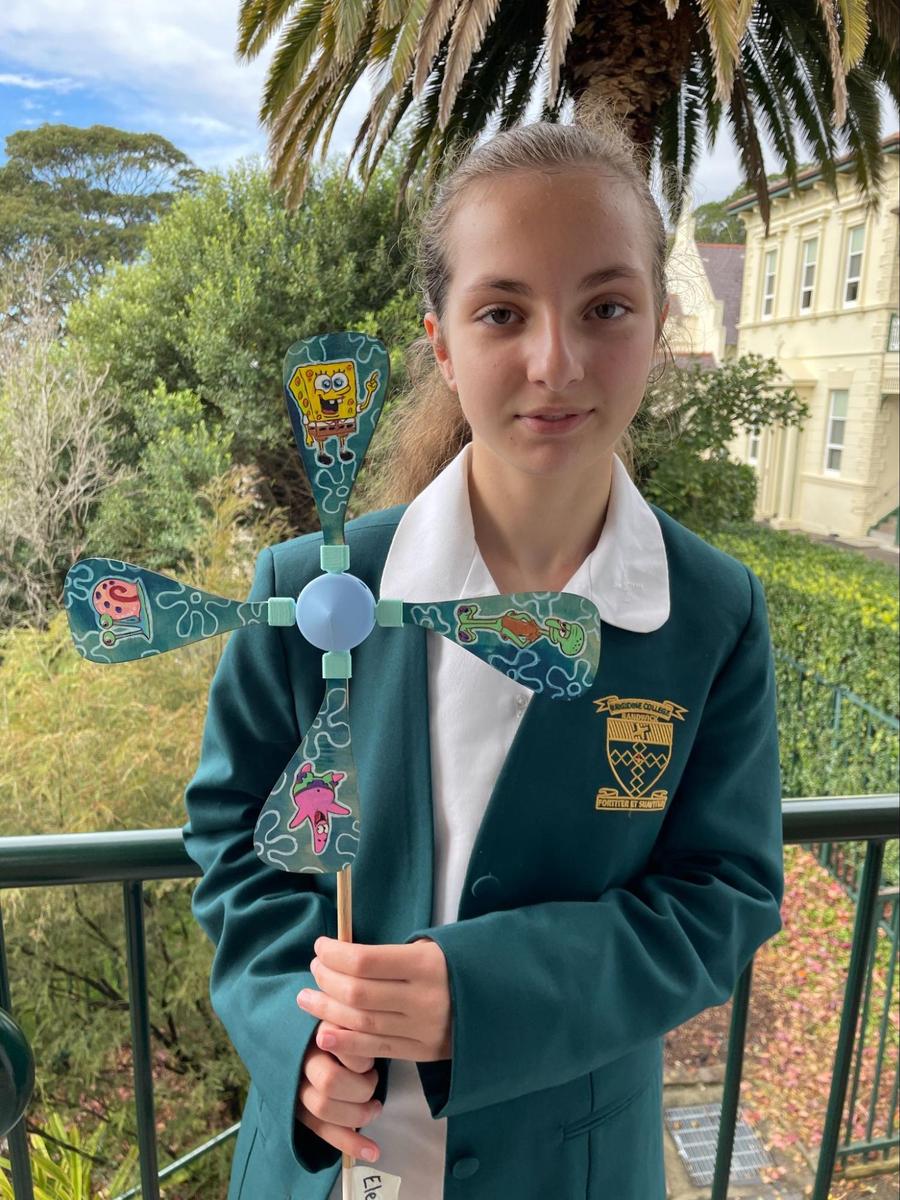

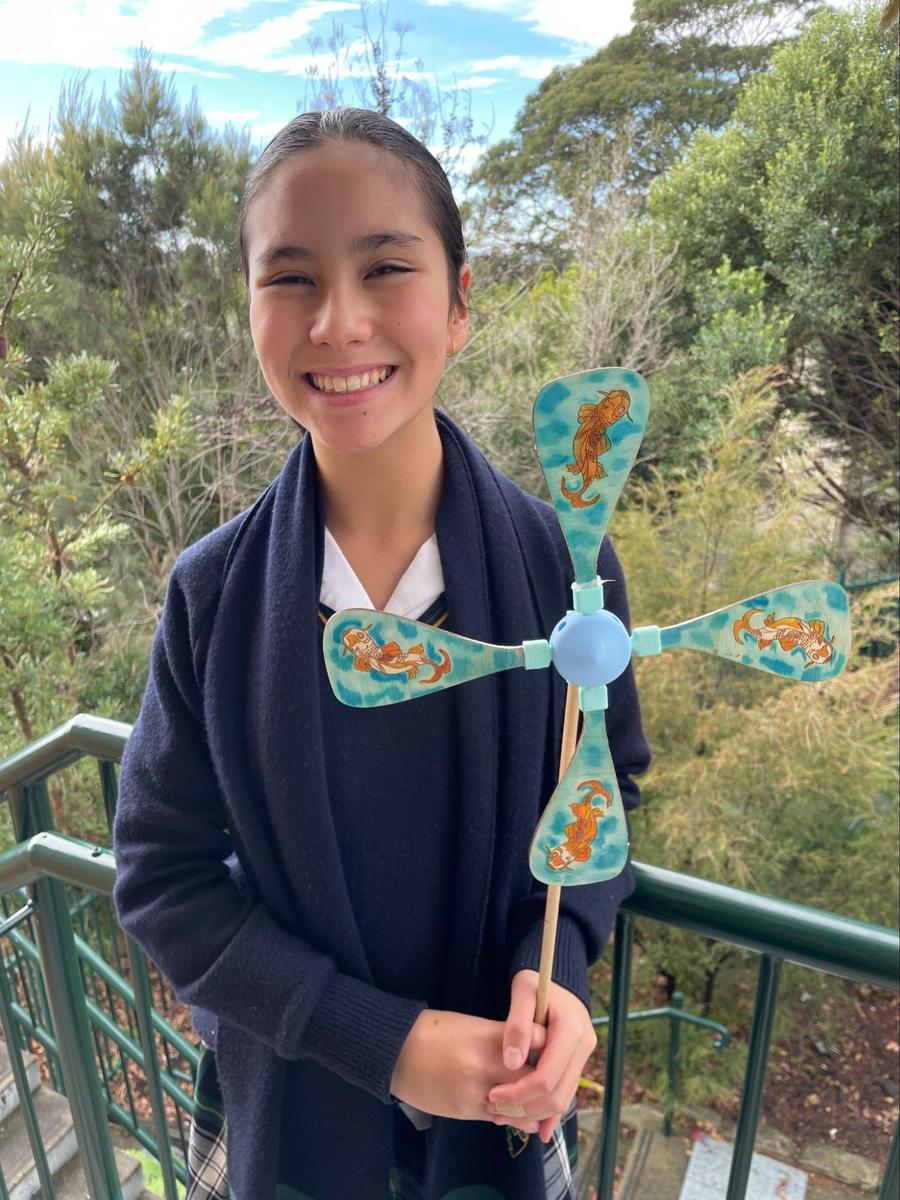
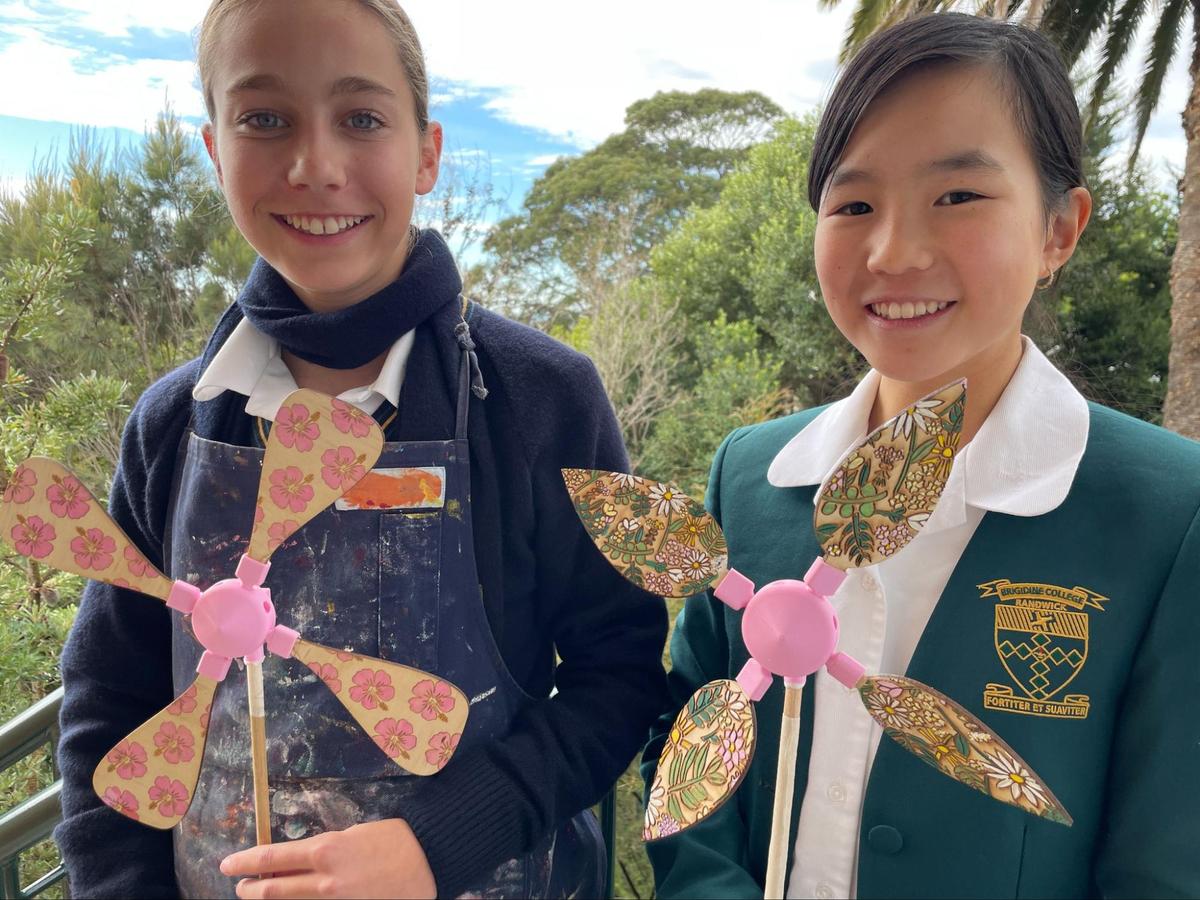




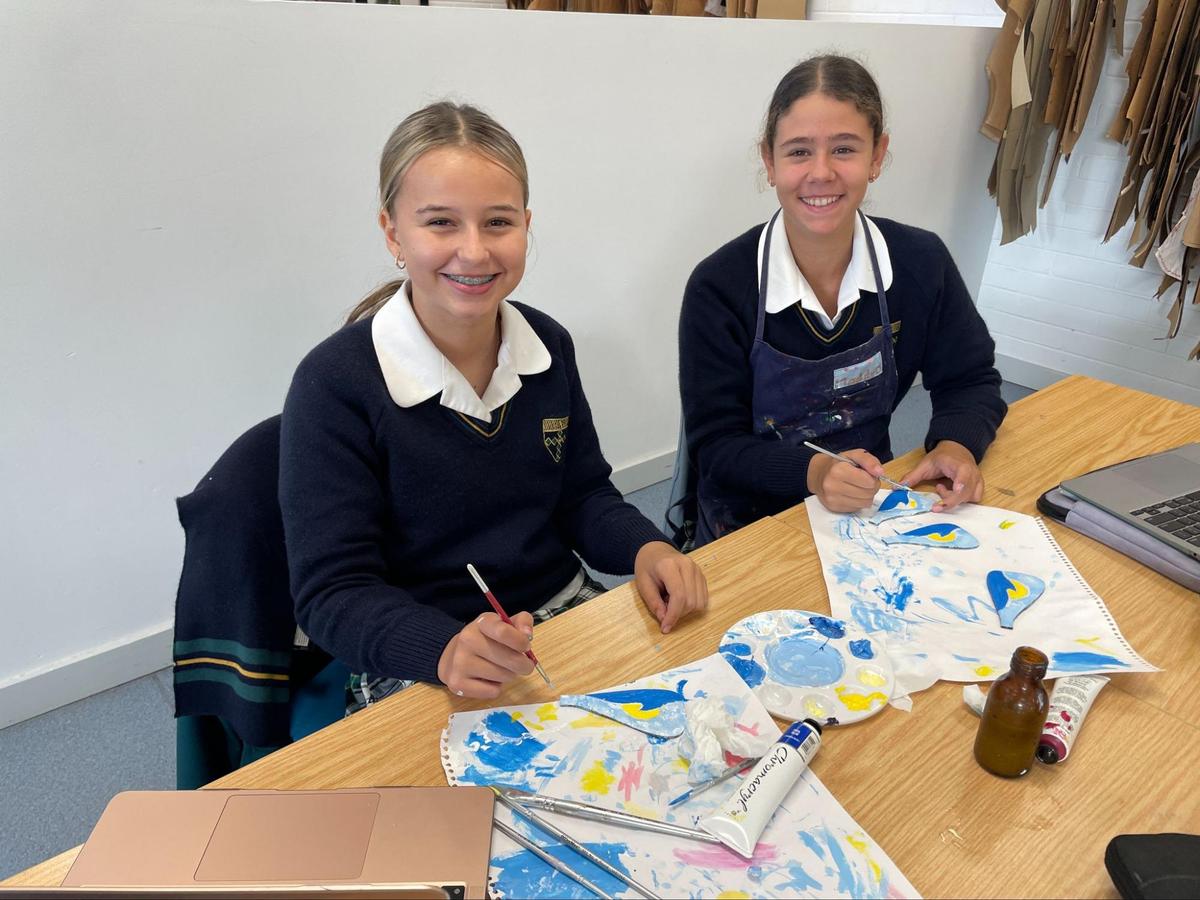
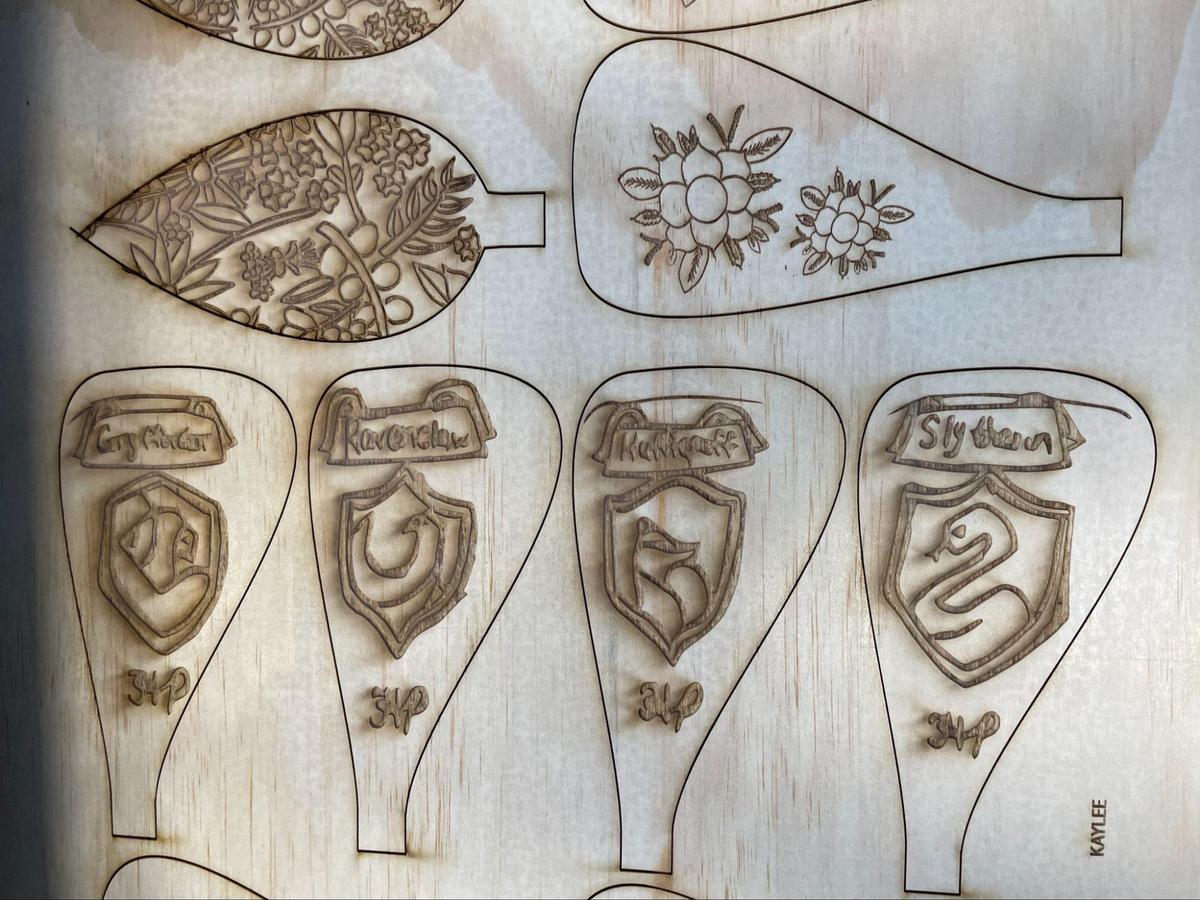
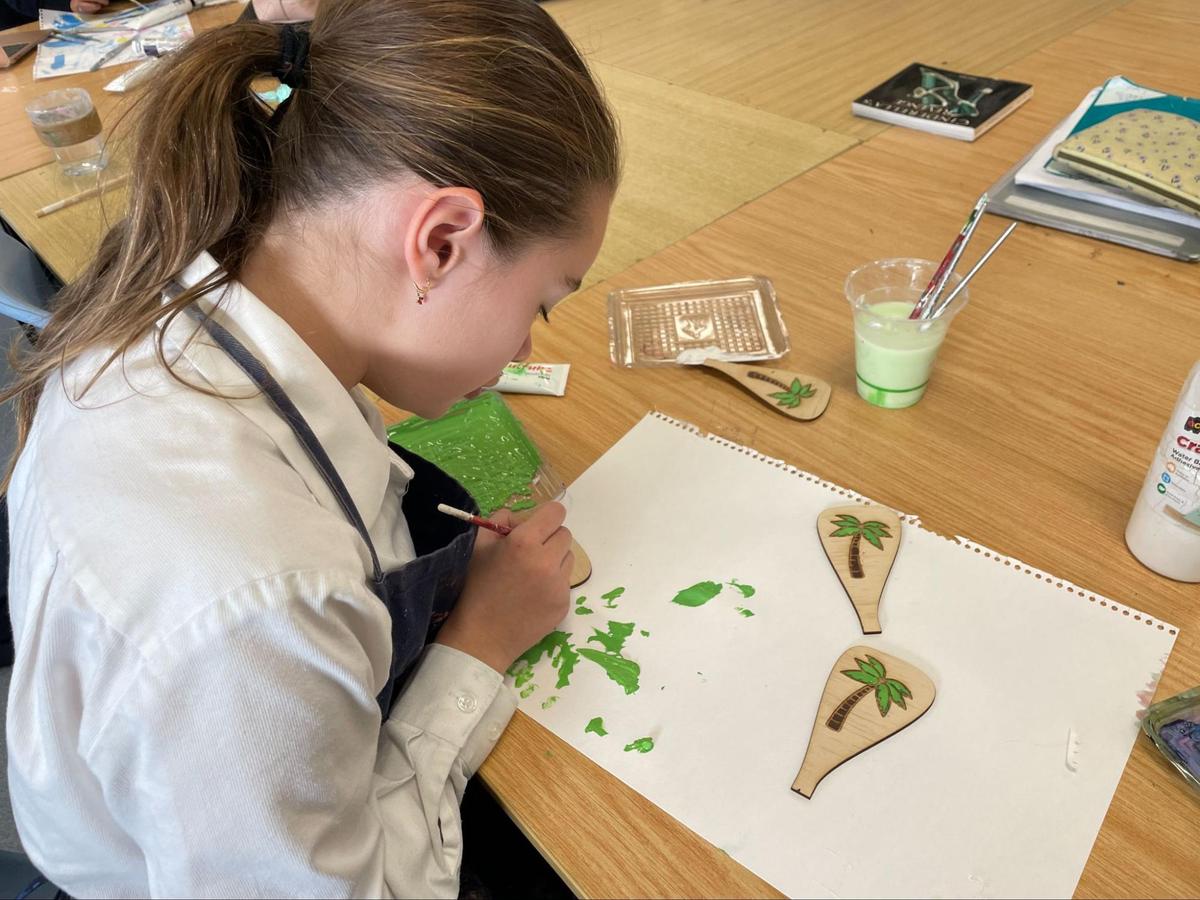
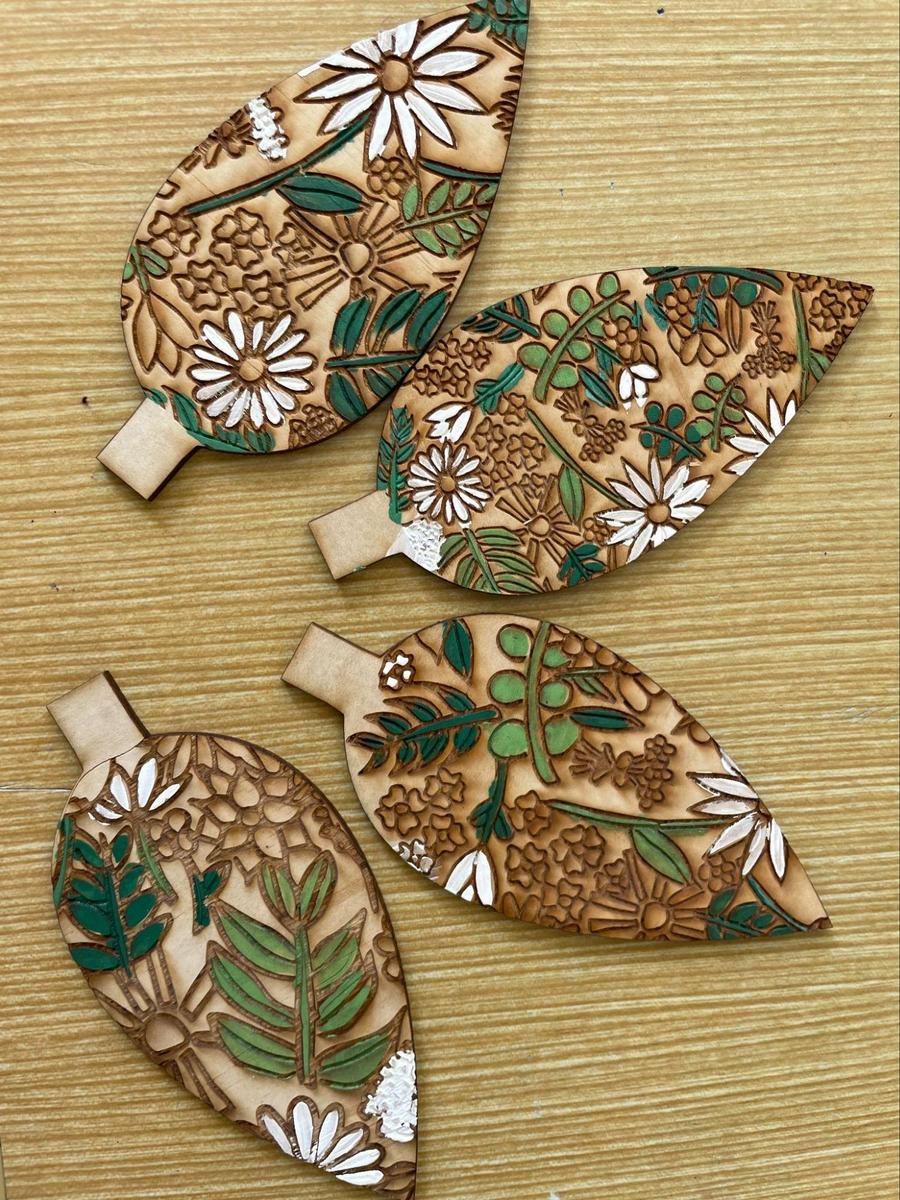




Year 7 Textiles
Year 7 students in 7TEC1 have been working hard on their Peter Alexander-inspired pyjama shorts and have taken on mini design projects to further develop their skills. The girls made sleep masks, scrunchies and headbands using their leftover fabric, as well as decorating a shirt to match their completed shorts. Many of them are very excited to return to Textiles in later years!
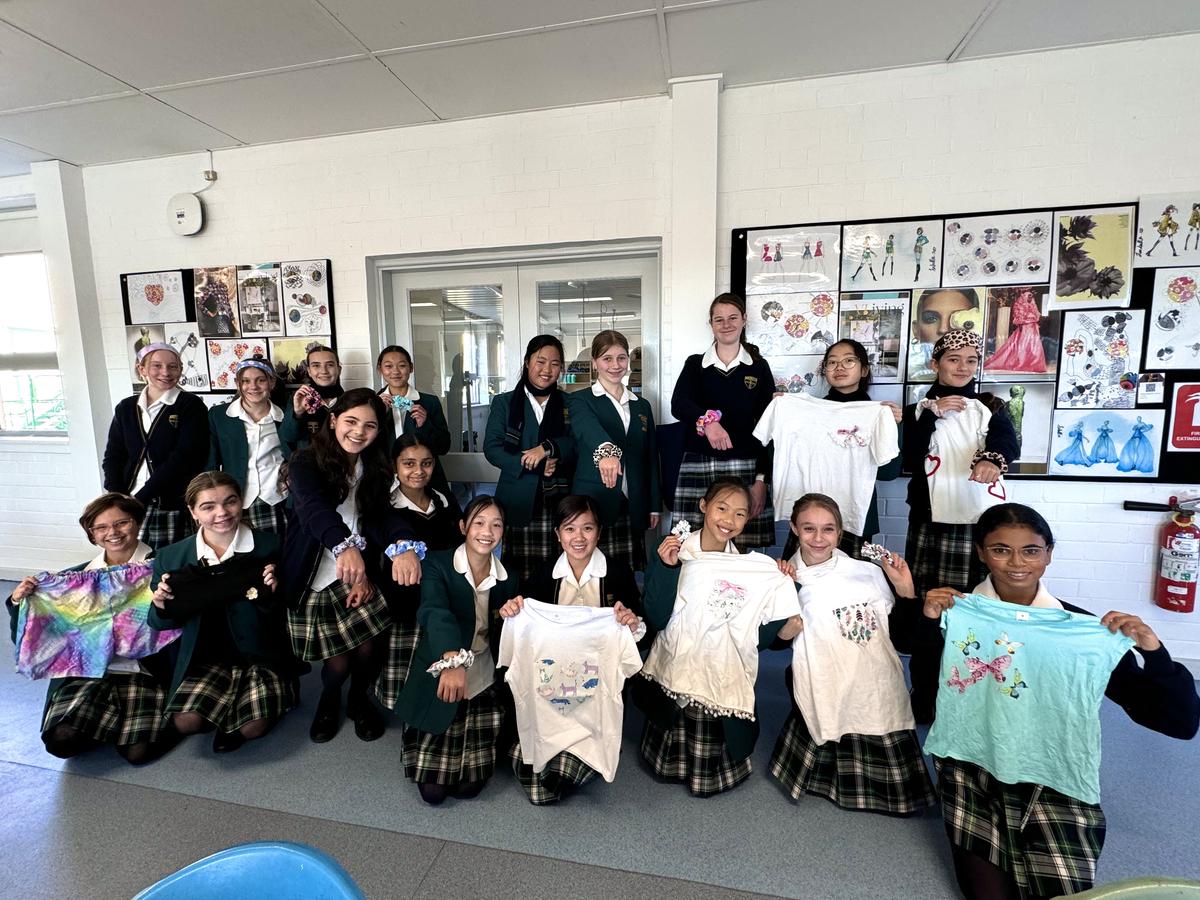

Ashleigh Clarke
TAS/VET Teacher
Year 8 Smart Farm Excursion
Our Year 8 Technology students had the wonderful opportunity to escape city life and visit two farms in Camden: Belgenny Farm and Camden Valley Farm. During our visits students learnt about farming history and practices, products particularly cheese making and the creamery process, as well as, seeing a working dairy farm where technological advancements in cow milking were discussed. For students currently undertaking studies in our Food and Agriculture unit, this was a welcome chance for them to learn about food production processes and complemented their studies in class. When our year 8 students switch their areas of study for next Semester our students currently studying Digital Technology will already go into their Food and Agriculture unit with some background knowledge and experiences.
Below are some student reflections on the excursion.
When visiting Camden Valley farm and Belgenny Farm, we learnt a lot from the variety of activities that we did. At Belgenny Farm, we learnt about the history of modern agriculture In Australia, how dairy products are processed and made and the history of the farm itself. We learnt that the Macarthur family arrived at Camden in 1805 and over many generations strongly influenced the horticulture, wool, wine and dairy industries. Many of the buildings at Belgenny Farm were built by Elizabeth Macarthur when her husband was away. After visiting Belgenny farm, we went to Camden Farm. There, we were able to see a fully functioning dairy farm that was filled with cows and cow poop! We were able to milk a cow, named Jenny, and see how a machine milked cows, where the milk was stored and how it was sold. This was very interesting, as we were able to have hands-on experience and understand the finances that go into dairy farming. Our favourite part of the experience was being able to milk the cow Jenny, and see the machinery which process dairy products, and the time and effort farmers put in to create high quality dairy products for consumers.
Anastasia and Nathalie (8TEC2)
To start off this exciting and adventurous excursion we started by taking a 1 hour bus drive to our first destination, the “Camden Valley.” On the farm, in small groups we rotated to different stations for the different activities. In our groups, the farmer guided us down to see all the cows either the calves, middle aged and the cows the farmers usually used for milking. In this activity we learnt all about the cow's digestive system, how many times they milk them (twice each day) and most importantly we got to view the cows up close. It was a really fun experience considering that most people didn’t know these facts, educating us in a fun way. Then we moved onto how they milked the cows before machinery came in. The Farmer talked us through how they used to milk the cows. We got told that the cows milk needs to be a nice, smooth liquid to be sold in shops. If the Milk is yellow and curdled then that means that the cow has a disease called Mastitis. This disease needs to be treated quickly. One by one we got the opportunity to have a go Milking the cow, Lucy. We then moved onto the machinery process of milking. In this process there are 4 rubber compartments that milk the cow, before the farmers milk the cow with the machinery they check that their milk does not have a disease. Finally, we moved on next to the other farm “Belgenny” learning about how the milk and cheese was produced and the different types of milk the cows produced. At the belgenny farm we got to go through the different buildings such as the creamery and many more buildings. We learnt how our dairy products are made, including yoghurt, cheese, milk, Ice-cream etc. Did you know that there are about 1.5 million dairy cows in Australia? That's right, 1.5 Million! We hope you have enjoyed reading this reflection of year 8’s excursion, and we hope you learned something new.
Emerson Tau & Tabitha Munroe (8TEC2)
We had a great day at Camden Valley and Belgenny farm! When we got to Belgenny Farm, our first farm visit, we were taken to the Creamery. We enjoyed the Creamery heaps as there was a lot of history and examples of farming tools over the years, some from the mid 1800S. We saw the process of how milk and many other dairy products were made and discussed how the process of making them has changed over time. We then went to see the process of making cheese! Our instructor used unhomogenised milk and vinegar to make the cheese but we later learnt we can try the cheese she made because it had not been pasteurised . This means the milk hadn't been heated to 38 degrees to kill all the bacteria . We really enjoyed walking around Belgenny to see how things work around the farm!
At Camden Valley Farm we were greeted by a cow called Jenny . Jenny was a large jersey cow. She was super friendly and hungry! We all got to milk her which was super fun. At camden valley farm the cows are milked every single day 365 days a year meaning they still must be milked on christmas and new years! We learnt that one of the cows had once milked 92 litres of milk which is a lot! After learning about Jenny we got taught the process of how they are milked . The cows get put in a machine when they eat to speed up the process of milking! After they have been milked the milk gets heated to 38 degrees to kill bacteria then cooled down to under 3 degrees . Overall we had an amazing day and we would love to go back if we had the opportunity!
Izzi Guerrera , Willow Haney , Marga Benette Mutuc and Imogen McCarthy (8TEC2)

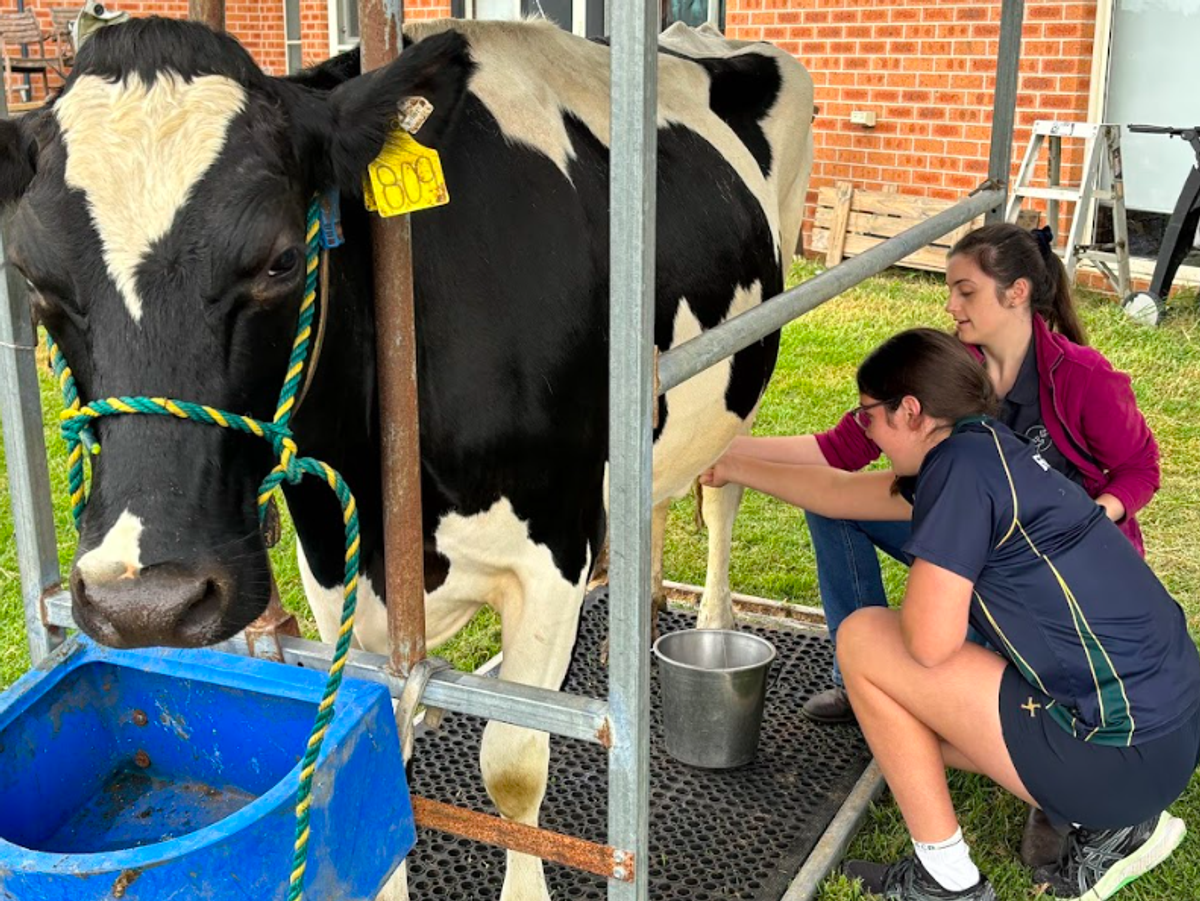
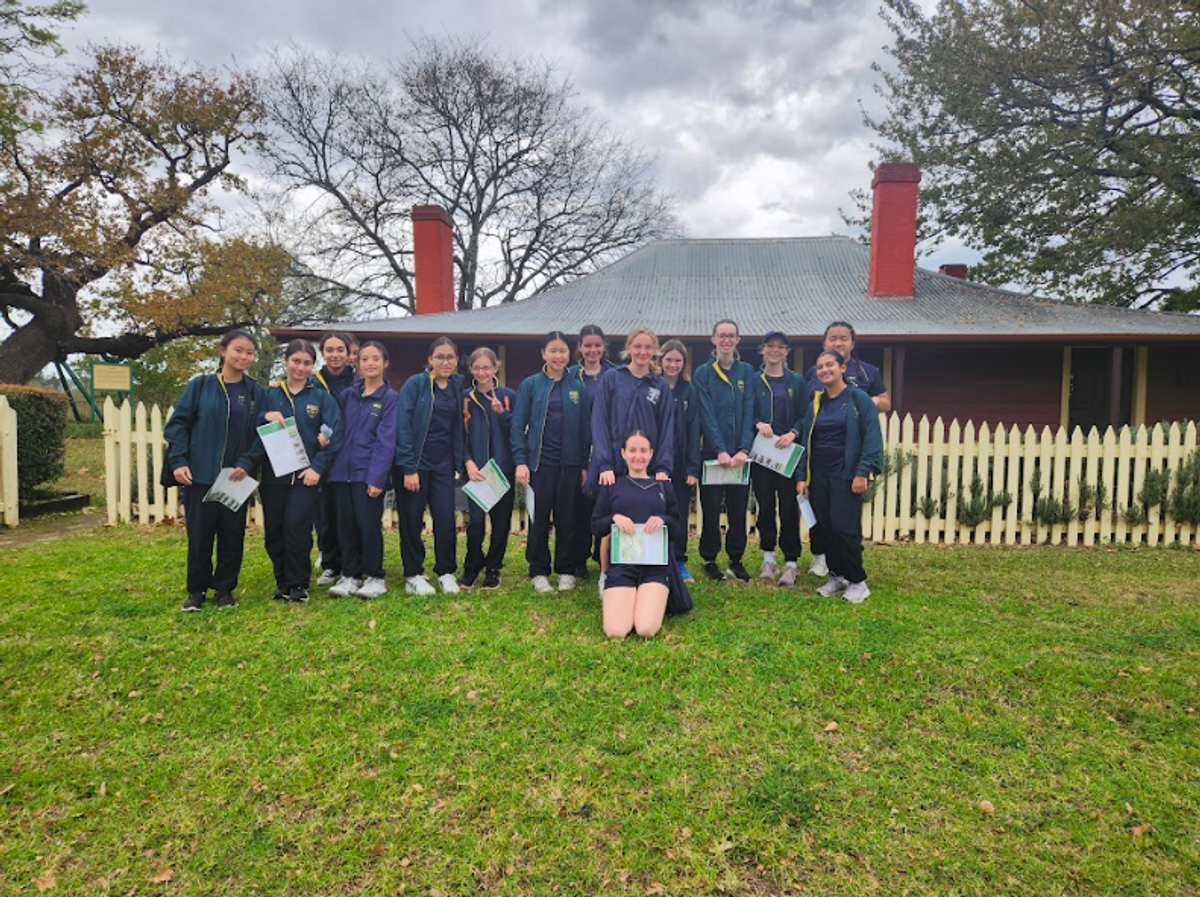
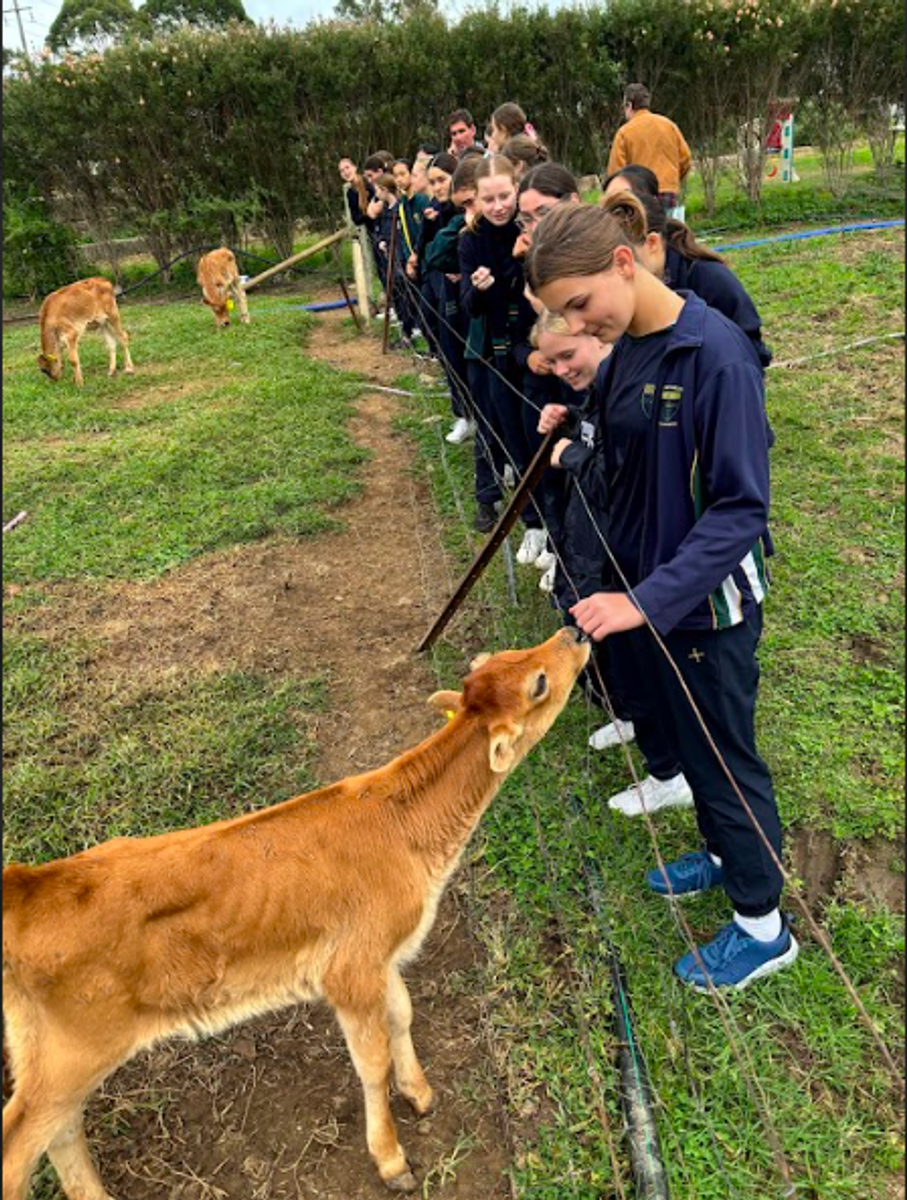
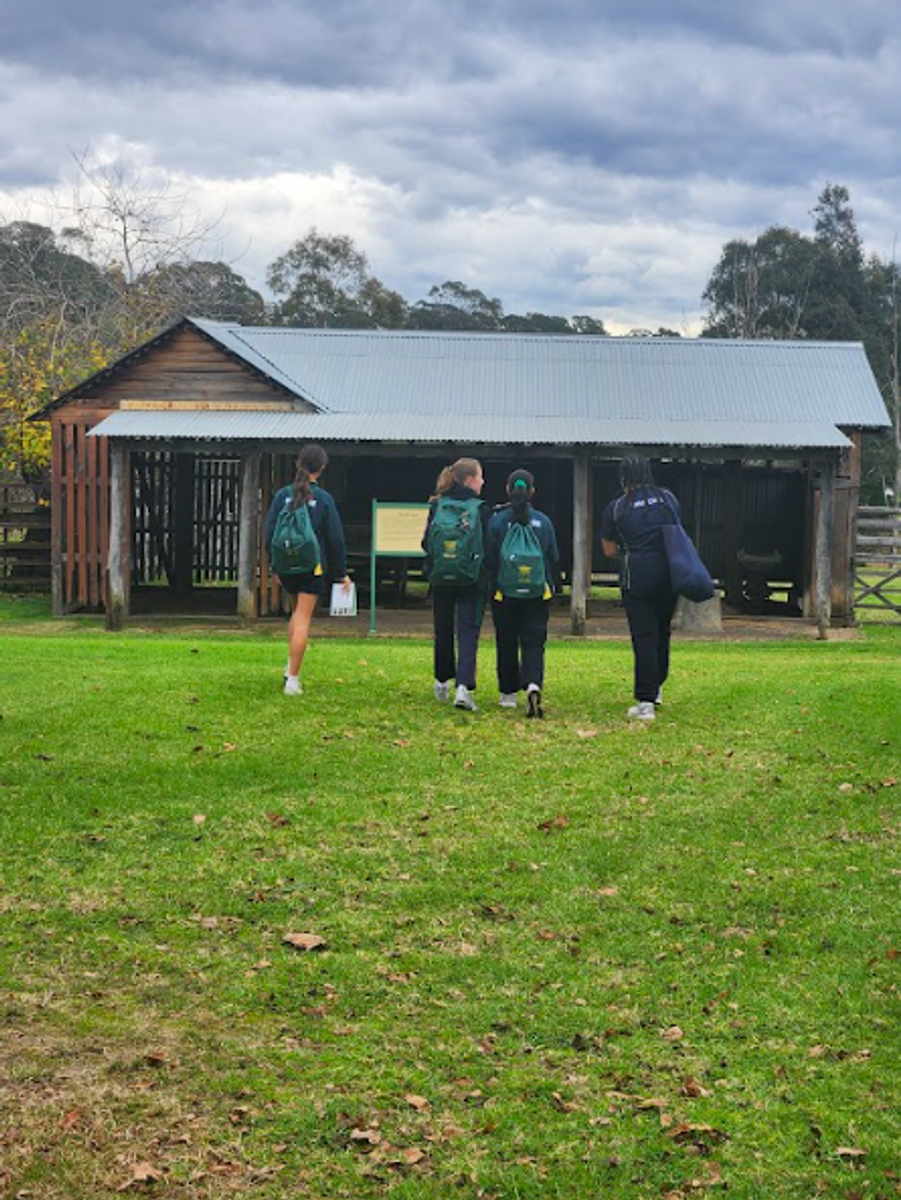


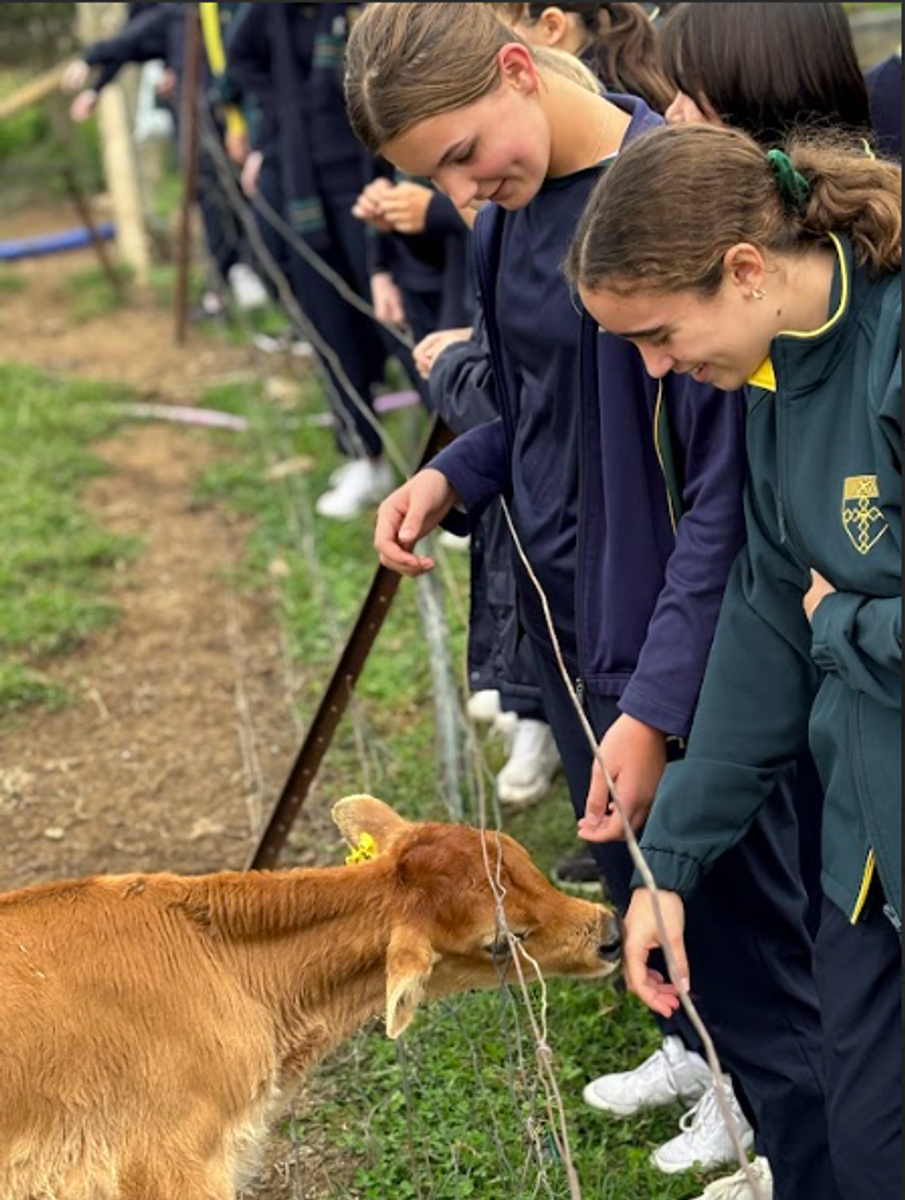
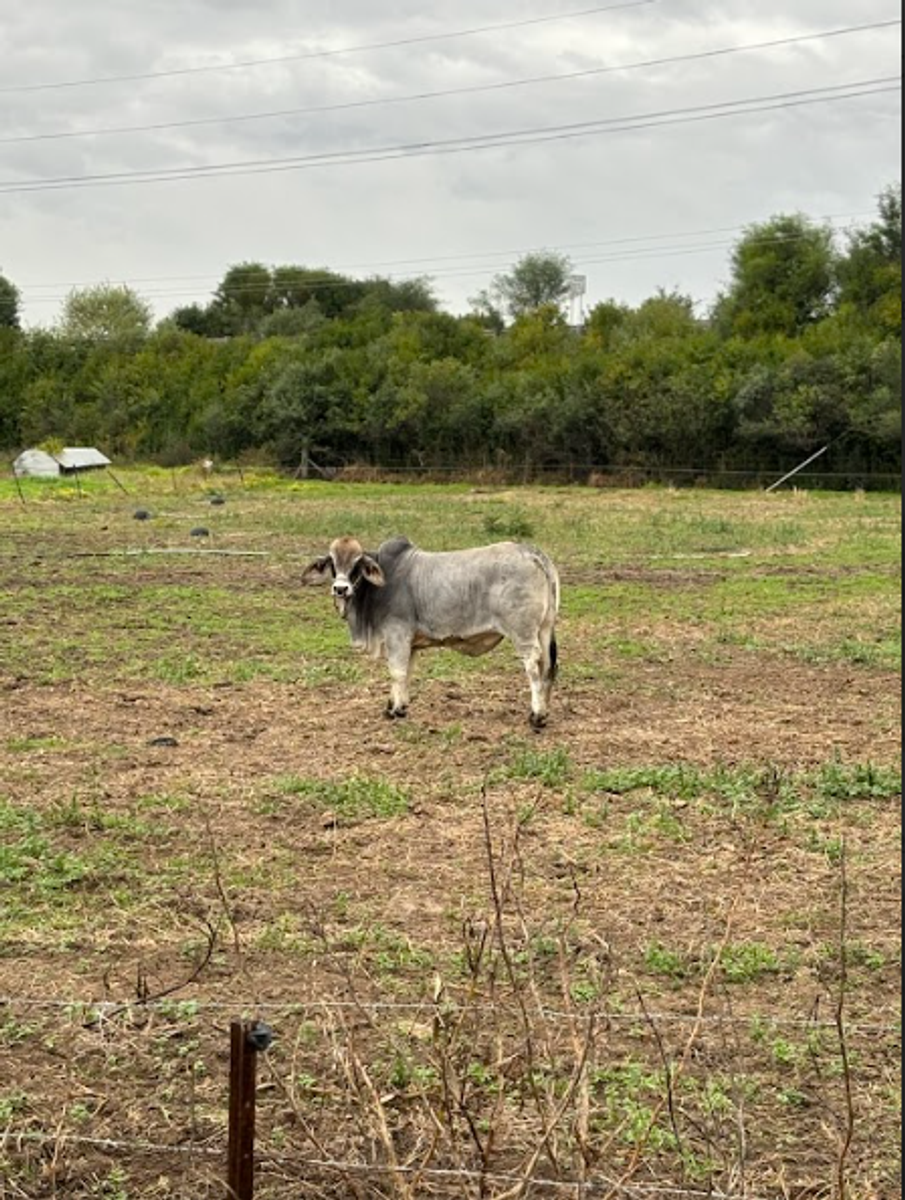











Year 9/10 Food Technology Indigi Grow Incursion
Year 9 and 9/10 Food Technology had the opportunity to learn about Native Indigenous plants during an incursion with Peter from IndigiGrow. The students were able to hear about the origins of various plants, touch, smell and even have a taste. It was great for the girls to link what they have been learning about in class and discover new ways for them to incorporate Bush Foods into recipes. Peter also left some Indigenous herbs and spices including lemon myrtle, cinnamon myrtle, salt bush and strawberry gum. Year 9 then used these to make compound butters for their freshly baked damper.
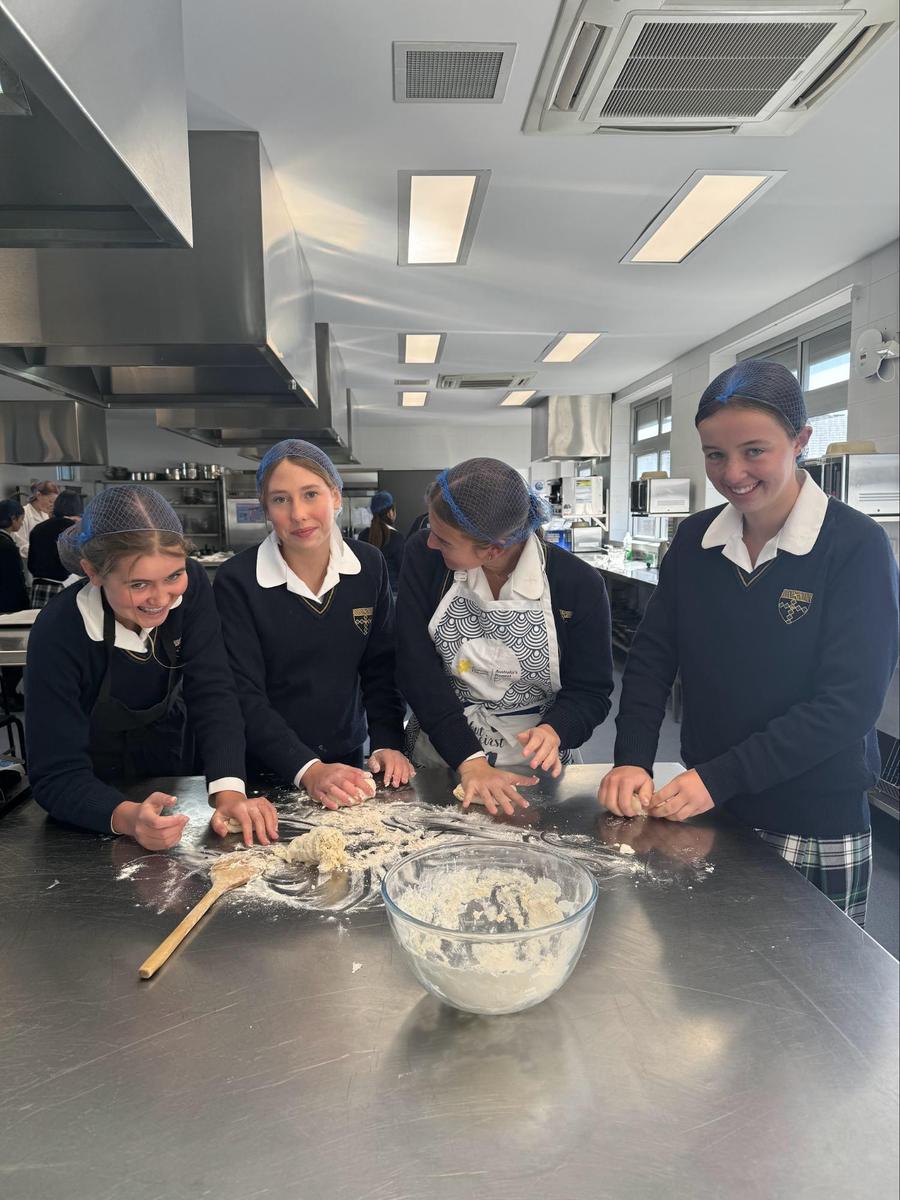
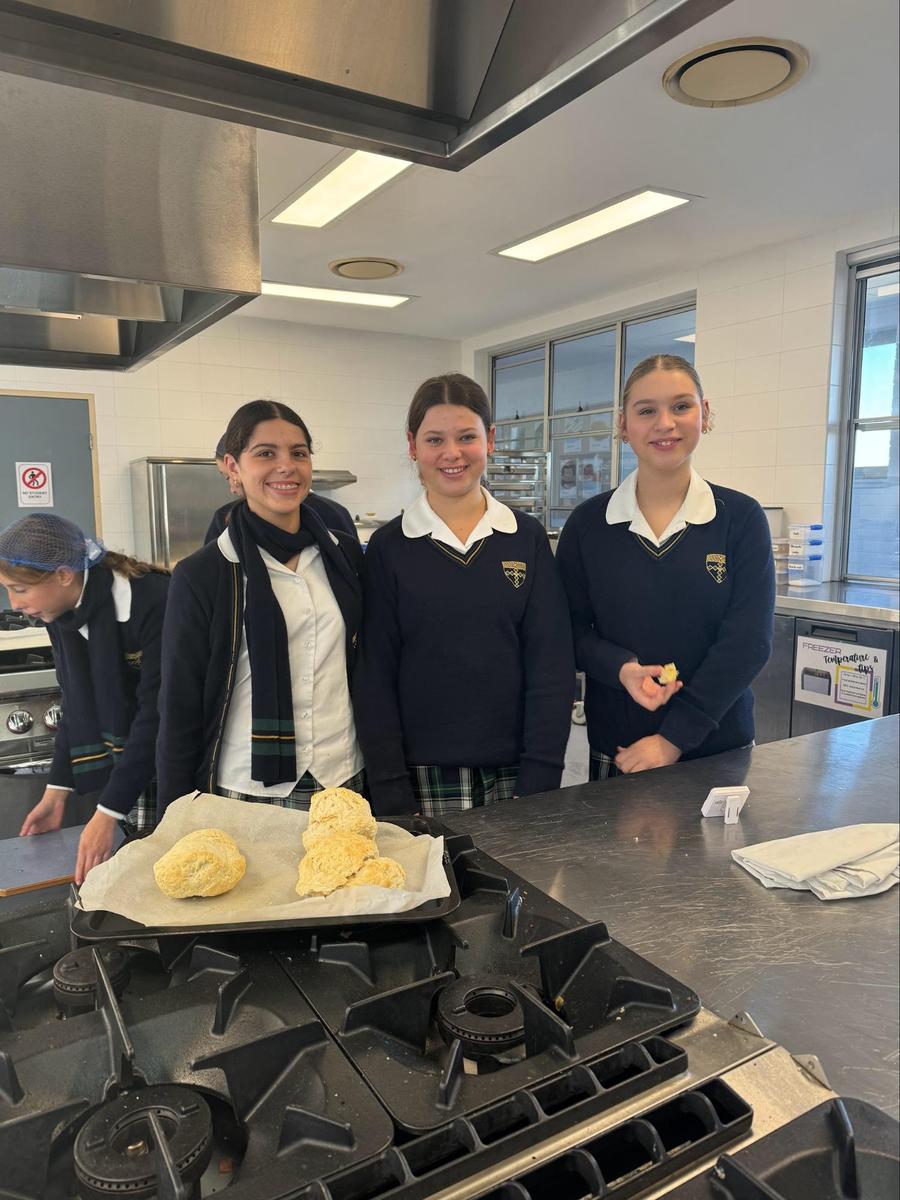


Year 9/10 Design & Technology: Theatre and Costume
As an extension to the Theatre and Costume Unit, Year 9 and 10 Design and Technology students worked collaboratively to create newspaper fashion, inspired by their favourite Met Gala themes. This activity encouraged the girls to think creatively and problem solve. Working with newspapers helped students understand garment construction, draping and pattern-making and required them to consider the form and structure of the material, leading to insights into how different materials behave in fashion design. See below the creative designs made by our talented students:
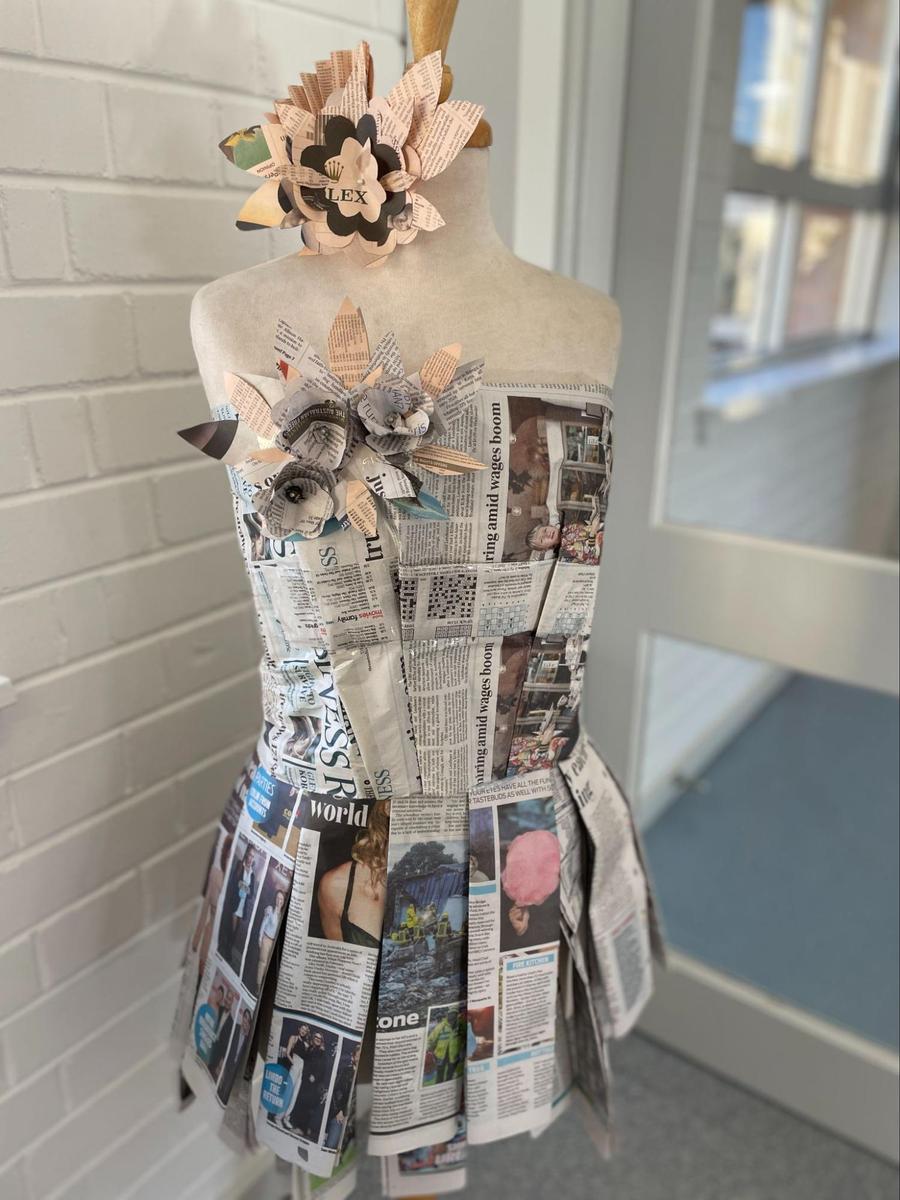
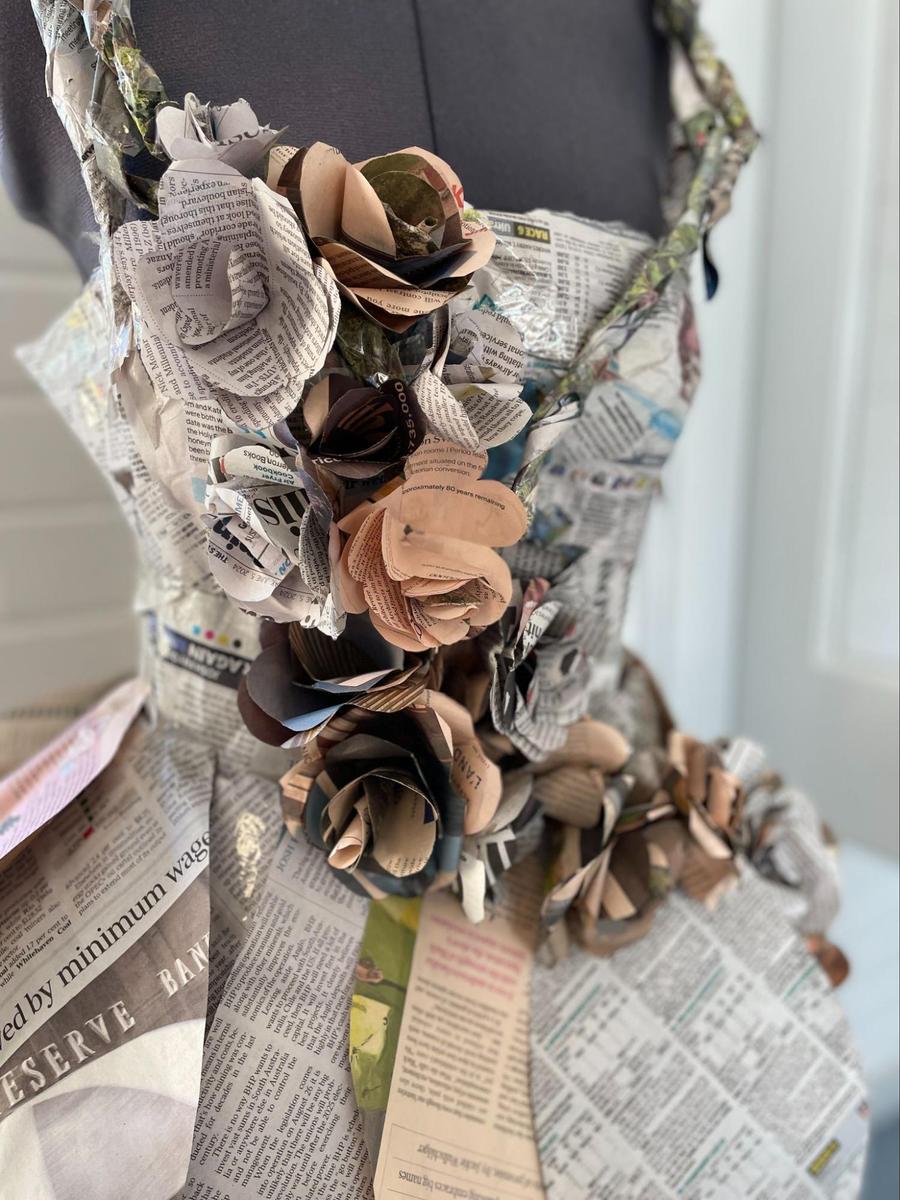
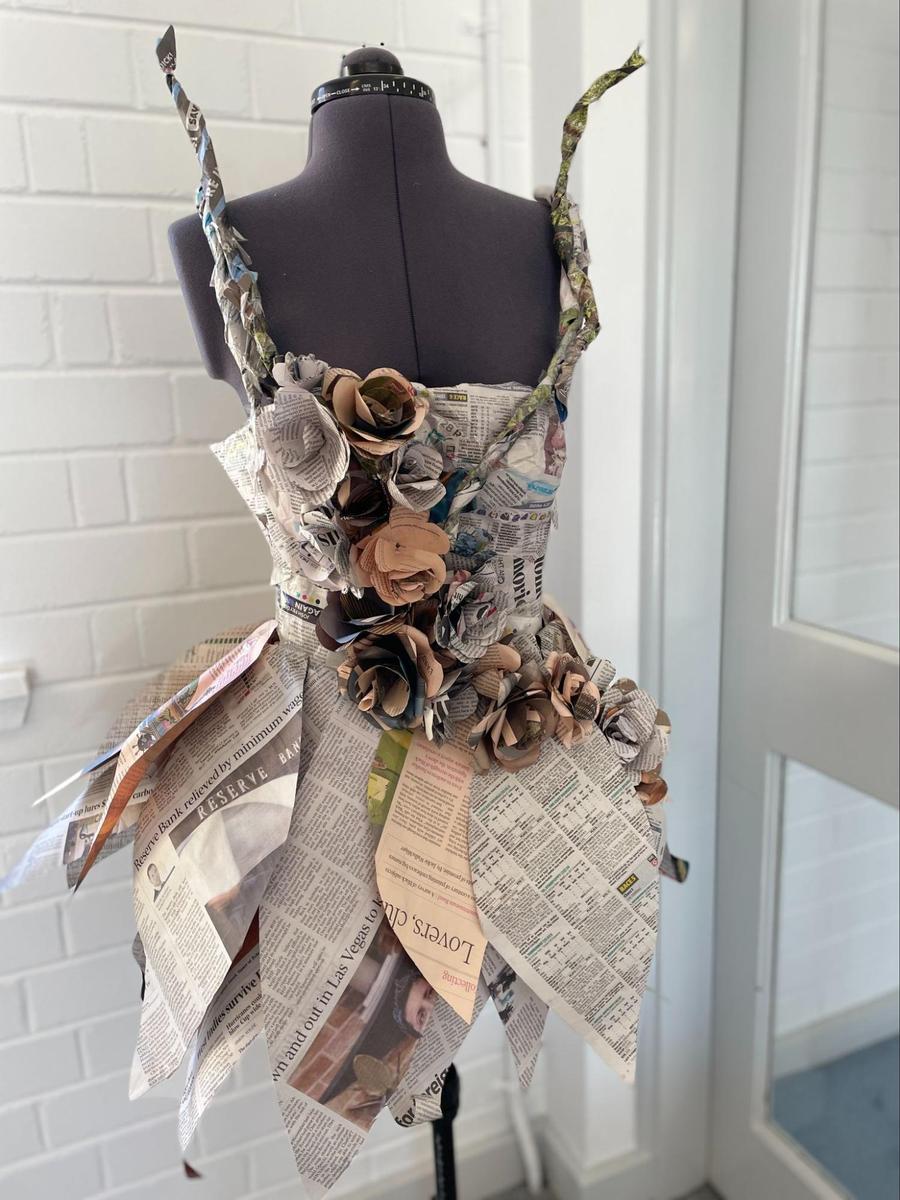

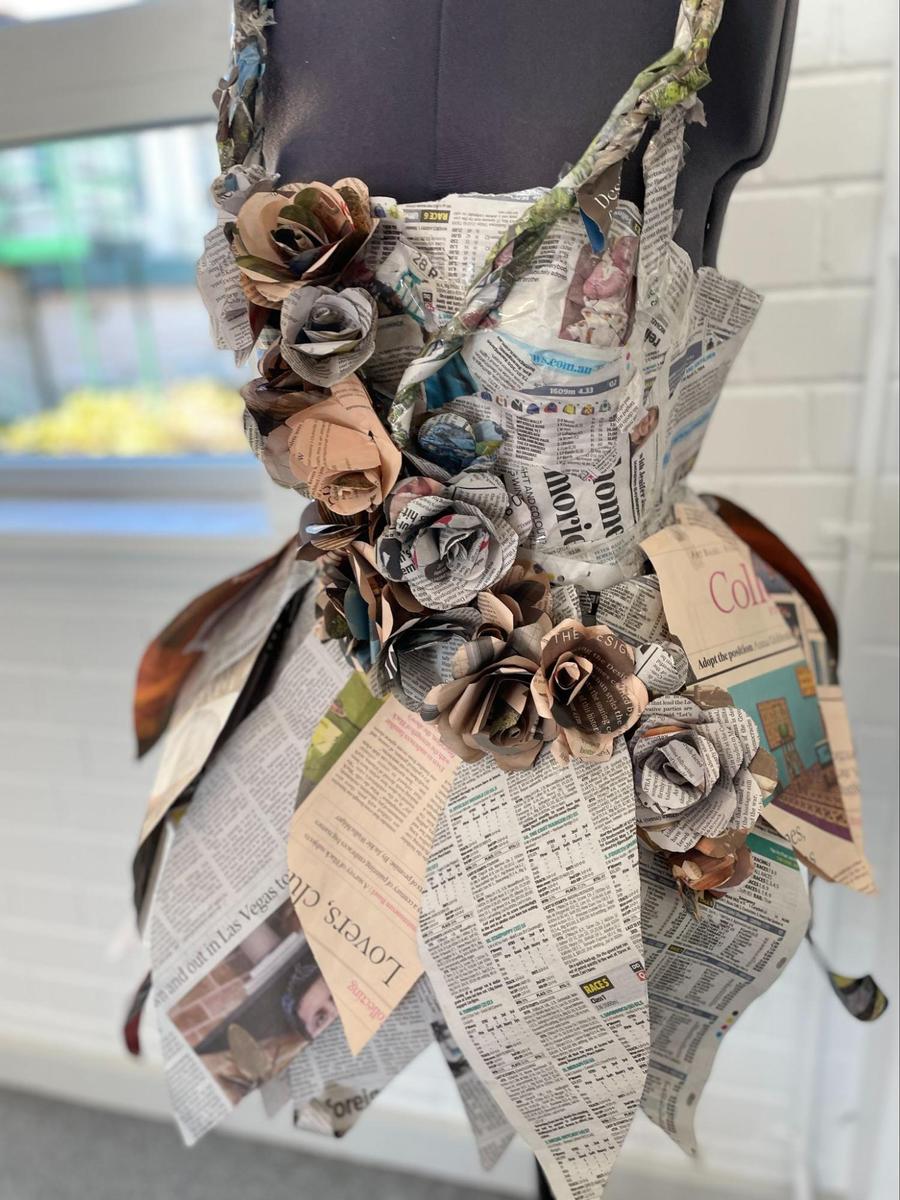
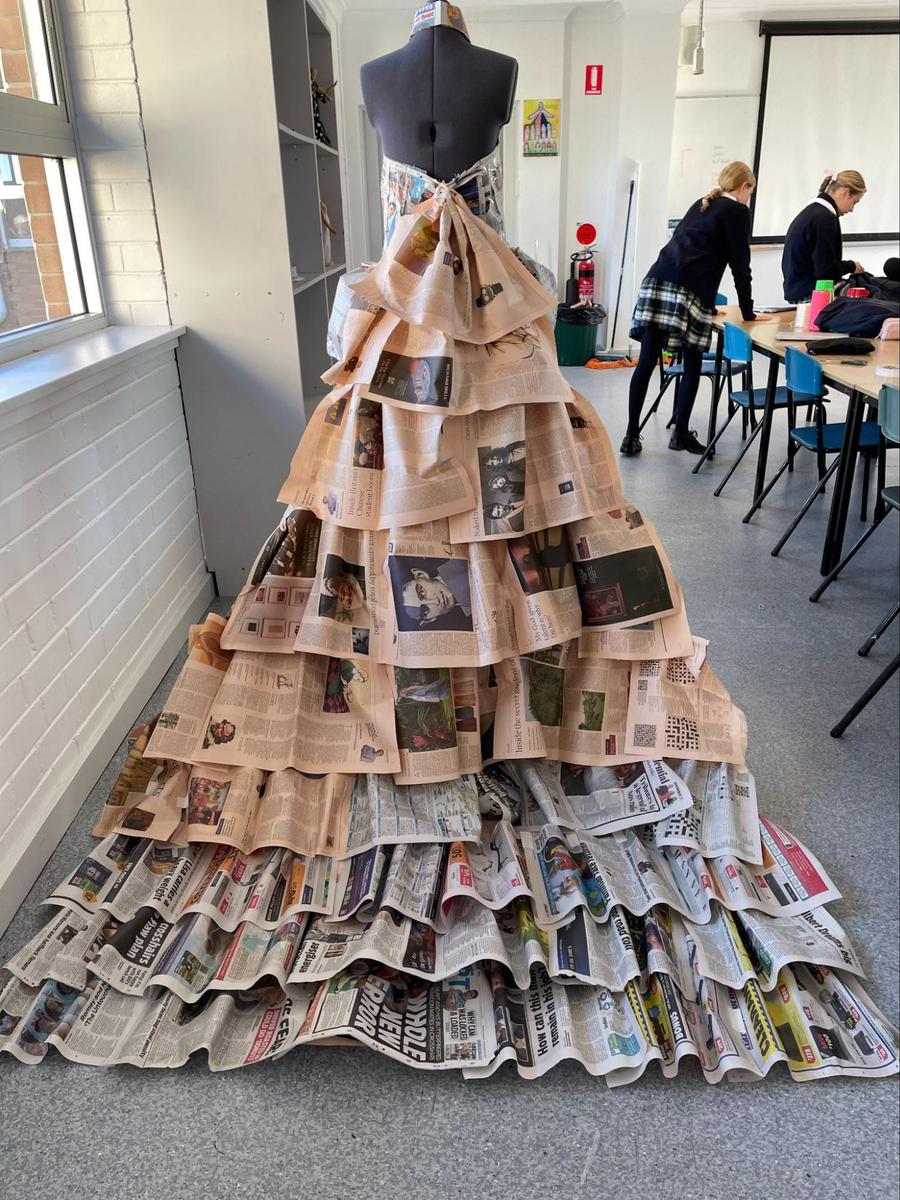
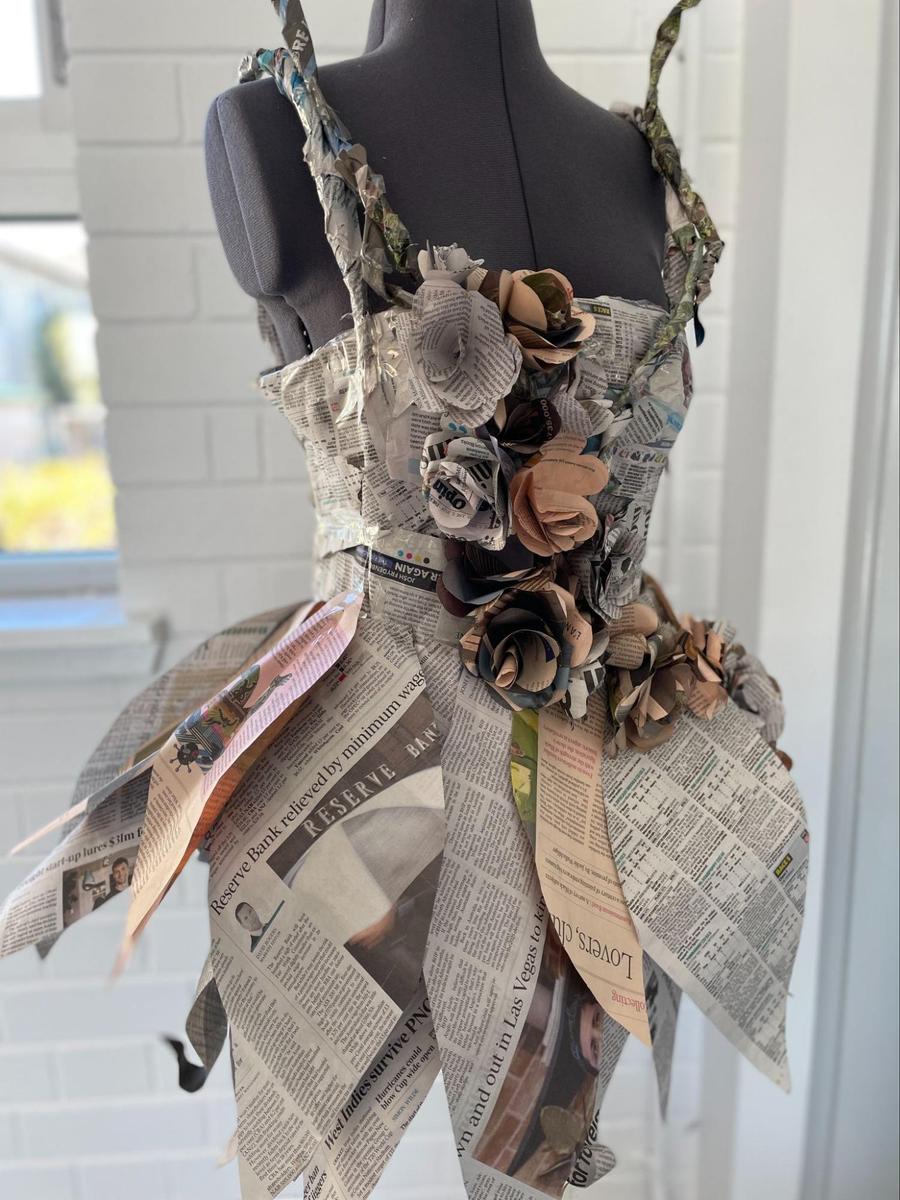
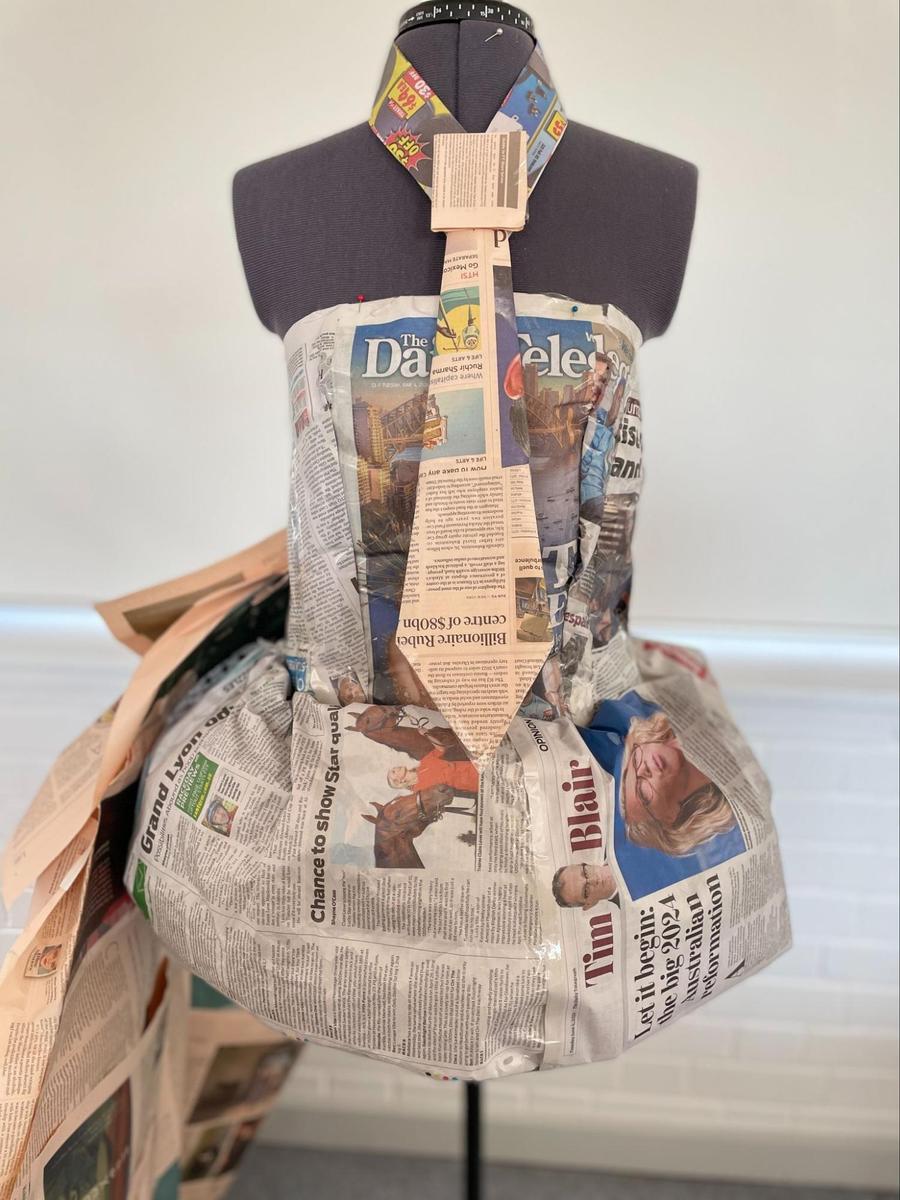








VET: Events, Tourism and Travel
Our girls in Events, Tourism and Travel have explored various aspects of the travel industry with a focus on destinations within Australia. They have then taken on the role of a “Travel Agent” to create a travel itinerary for a holiday that looks at a broader range of locations and destinations. The holiday itinerary they develop will include an around the world trip for three weeks with a focus on a variety of locations and experiences. All of the girls will be preparing for industry placement next term in weeks 2-6. This will provide students with a wonderful opportunity to develop skills in the industry and experience in the daily running of various hotels.
VET: Hospitality
Year 11 and 12 Hospitality have been cooking up a storm in the kitchen as they move through learning a wide variety of skills and food preparation processes and techniques in practical lessons. Students have learnt about the importance of hygiene and safety when working in a commercial kitchen with the implementation of HACCP plans when producing a recipe. Students have also developed skills in food preparation, organisation and cookery engaging in a range of practical experiences.
In the preparation of recipes students have worked effectively with others, sourced and used information on the hospitality industry, used a range of food preparation equipment, cleaned kitchen premises and participated in safe food handling practices. They have also been practising their precision cuts through the making of staple recipes in class and at home such as minestrone soup, chargrilled chicken wraps and chicken schnitzel. Year 12 have explored various methods of cookery and developed their skills in braising, shallow frying, grilling and deep frying. Through each of these areas they have used and developed their cooking and presentation skills.
We are so proud of how much our girls have grown as chefs in the kitchen and their dedication and hard work in learning new practical requirements. These skills and experiences will serve them well when they go on their industry placements in the future. See below some examples of our Hospitality girls in action:
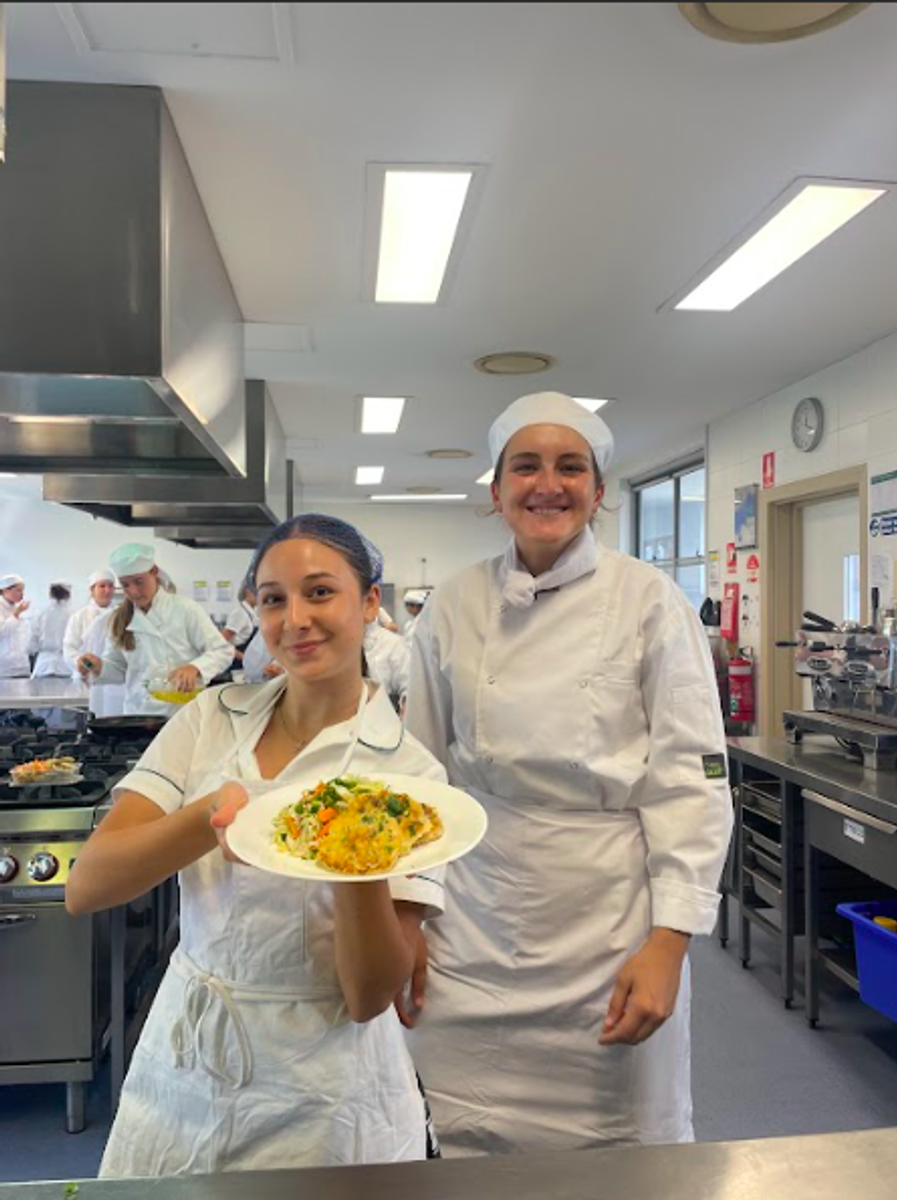
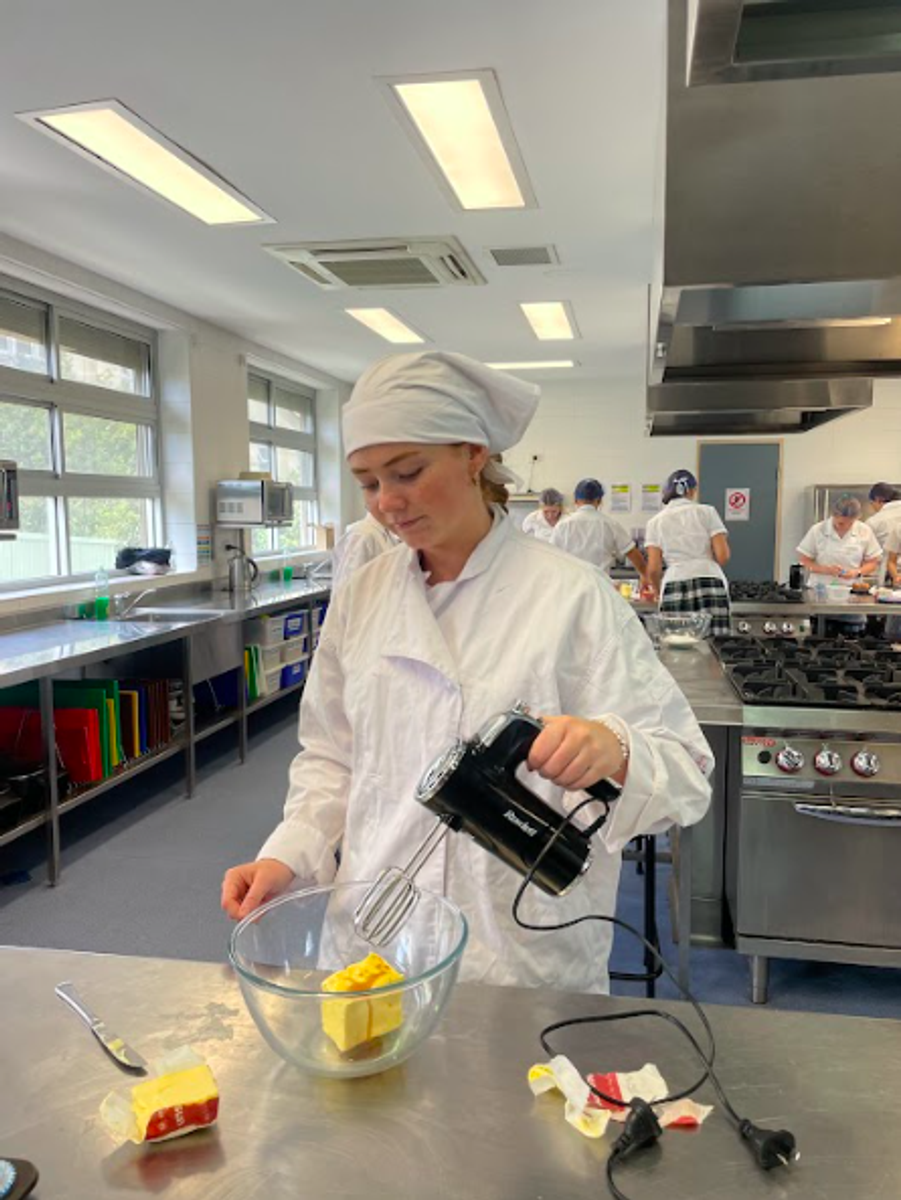
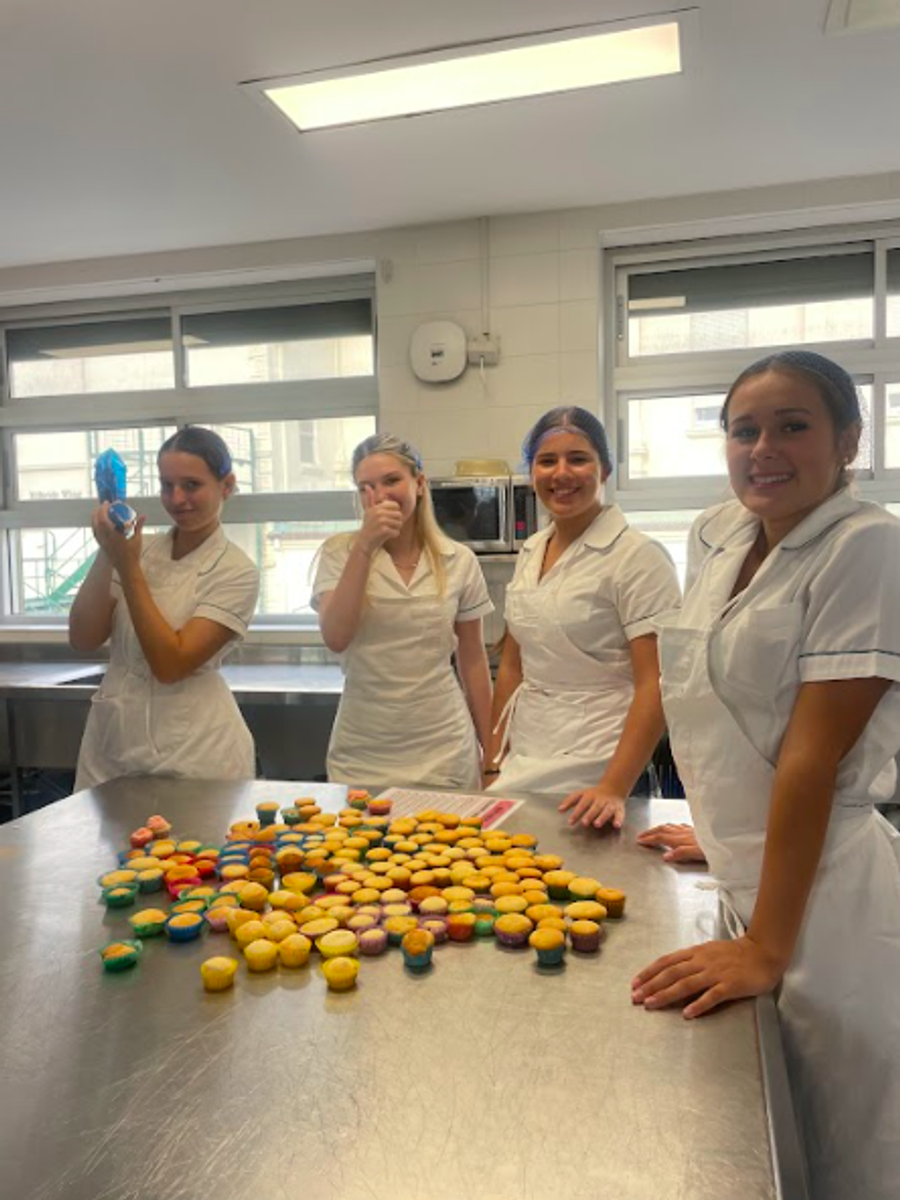
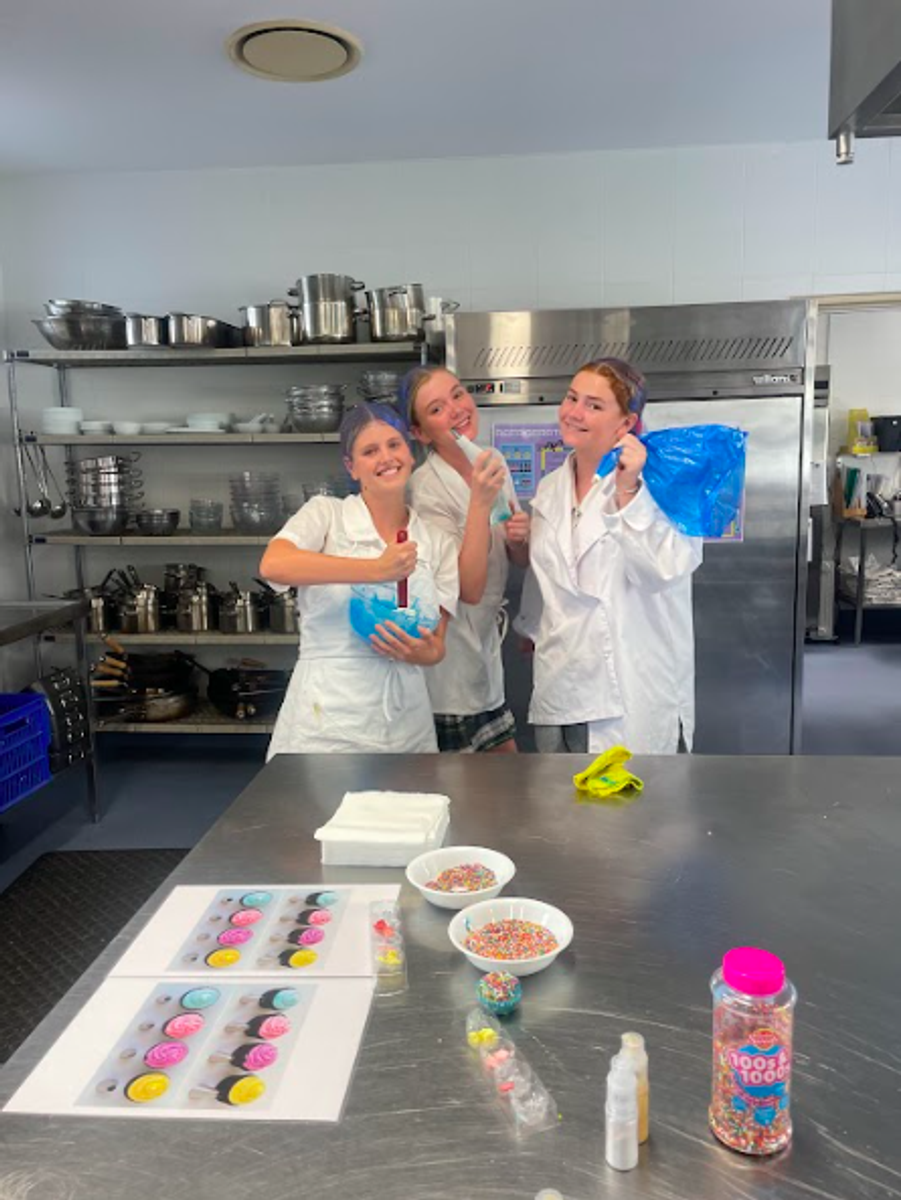
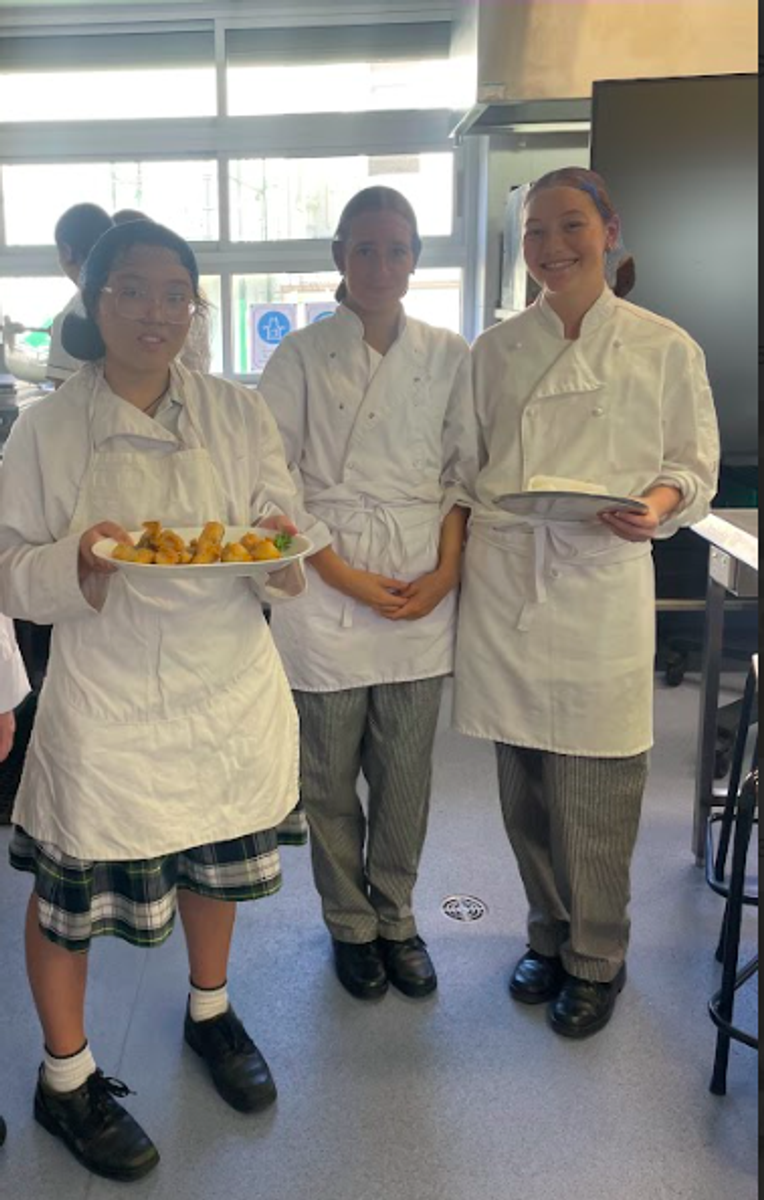





Melissa Nutter
Head of Visual Arts & Head of TAS (Acting)